




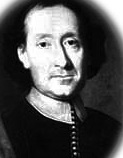
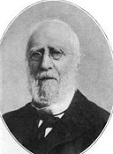

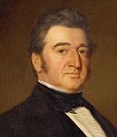
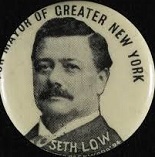







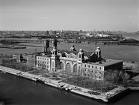


















TLW's New York Cityscope™ (New York City Historyscope) |
By T.L. Winslow (TLW), the Historyscoper™ |
© Copyright by T.L. Winslow. All Rights Reserved. |
Original Pub. Date: Aug. 19, 2016. Last Update: May 30, 2022. |


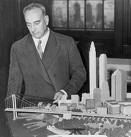



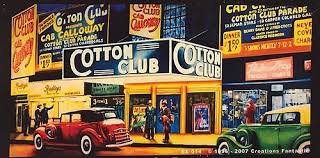
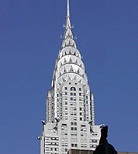
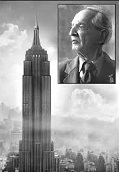
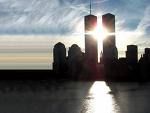
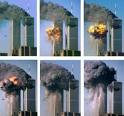




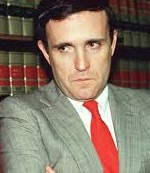
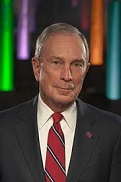


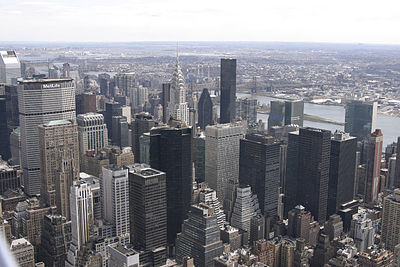
Westerners are not only known as history ignoramuses, but double dumbass history ignoramuses when it comes to New York City (simply known as New York) and New York City history. Since I'm the one-and-only Historyscoper (tm), let me quickly bring you up to speed before you dive into my Master Historyscope.
About 18K B.C.E. the last ice age in the N Hemisphere ends, caused by changes in the Earth's orbit?; modern-day New York City is covered by the 1K ft. thick Wisc. Ice Sheet, part of the Laurentide ice sheet, which is 5K ft. thick in the Adirondacks and 10K ft. thick in Labrador.

On Mar. 1, 1524 Italian Florentine explorer (sailing under the French flag) Giovanni da Verrazano (Verrazzano) (1485-1527), sent by Francis I of France to explore the North Am. coast between Fla. and Newfoundland in hopes of finding a passage to the Pacific Ocean lands near Cape Fear, N.C.; on Apr. 17 after sailing S along the S.C. coast, turning N, discovering the Outer Banks of N.C. (thinking that it splits North Am. in two with the "Sea of Verrazano"), then missing Chesapeake Bay and the Delaware River, he discovers the mouth of the Hudson River and New York Bay, and anchors in the Narrows of New York Harbor between Staten Island and Long Island (home of the Manhasset, Shinnecock, Patchogue, and Montauk Indians), where a party of Lenape arrive in a canoe "clad with fowl feathers of diverse feathers. They came towards us very cheerfully, making great shouts of admiration, showing us where we might come to land most safely with our boat"; thinking that the Hudson River is a freshwater lake, he follows the S coast of Long Island past Block Island Sound, then records an island about the size of Rhodes (Rhode Island in Narragansett Bay near modern-day Newport?), where he meets "two kings more beautiful in form and stature than can possibly be described" (Massasoit's great-grandfather?); he then heads to the coast of Maine, then Nova Scotia and Newfoundland, then back to France - the first wop-dago in New York Harbor, and in a stolen vehicle?

On May 1, 1607 English explorer Henry Hudson (1566-1611) makes his First Voyage in his 80-ton ship Hopewell to find a Northwest Passage, and makes it as far N as Willem Barents' Spitsbergen. In 1608 Henry Hudson makes his Second Voyage, looking for a Northeast Passage through 5.4M sq. mi. of ice - good luck, sucker? In summer 1609 English explorer Henry Hudson (1566-1611) begins his Third Voyage to search for a Northwest Passage in the Dutch ship Half Moon (Halve Mein); on Aug. 28 after a budding mutiny of his crew causes him to reverse course and head toward the New World, he discovers Delaware Bay and the Delaware River; on Sept. 11 he discovers New York Bay, sailing into the Hudson River on Sept. 12 and founding New Amsterdam (renamed New York in 1664) on the Hudson River, while setting eyes upon the wooded island of Manhattan, from the Lenape word Mannahatta, meaning island of many hills; on Sept. 14 he enters the Tappan Zee (Sea) 10 mi. N of Manhattan, thinking that the widening of the Hudson River indicates a Northwest Passage, then giving up after reaching modern-day Troy; meanwhile he makes the first Euro encounter with the Mohicans (Mahicans); upon returning to Europe he is arrested for sailing under another nation's flag - does that make him an illegal alien? In 1610 Henry Hudson (b. 1566) makes his Fourth Voyage in search of a Northwest Passage, sailing through the Hudson Strait and discovering Hudson (Hudson's) Bay and the Hudson River; too bad, the crew mutinies and returns to England after setting Henry, his son and several others adrift in Hudson Bay on June 22, and they are never seen again.
On Sept. 6, 1609 John Colman, a sailor in Henry Hudson's mostly-Dutch Half Moon crew of 16 becomes the first recorded murder in future New York City while anchored between Coney Island and Sandy Hook after their 16-ft. shallop containing him and four others is ambushed by two dugouts containing a total of 30 Indians; it is unsolved until ?.
On June 3, 1621 (worried about them pesky English?) the Dutch West India Co. is chartered for the New Netherlands (Netherland) to share world trade with the Dutch East India Co. by Peter Minuit's Antwerp friend Willem Usselincx (1567-1647), who prefers colonization of the New World to profit, and gives up after the Dutch estates-gen. don't support him; the co. later acquires a monopoly in Africa the North Am. coast from Newfoundland to Chesapeake Bay; in 1645 not-so-useless Usselincx utters the Immortal New York, New York Soundbyte: "It is because of foreigners that the country will be peopled, because its might is derived mostly from those who come from abroad and settle, marry and multiply here. If one were to remove the foreigners, their children and grandchildren from the large cities of Holland, the remaining residents would be fewer in number than those removed" - never mind those English squatters?
In 1623 the Dutch found a settlement on Long Island, N.Y.
In 1624 after fleeing Spanish control in Belgium for Leiden, Holland, Philippe du Trieux (1588-) a French-speaking Protestant Walloon born in Roubaix emigrates with his family to New Amsterdam, being among the first settlers, going on to change their name to Truax, Truex, Trueax et al.

On May 4, 1626 after being appointed the first dir.-gen. of New Netherlands, Peter Minuit (1580-1638) arrives at the mouth of the Hudson River in the Sea Mew, then on May 6 buys Manhattan Island (discovered in 1609 by Henry Hudson) from the natives for 60 Dutch guilders ($24) in trade goods (beads and geegaws), followed on Aug. 10 by Staten Island for another 60 guilders worth of trinkets; meanwhile the Dutch West India Co. rips off the Spanish treasure ships for 120M guilders?

In 1629 under the urging of Amsterdam diamond and pearl merchant Kiliaen (Killian) Van Rensselaer (1585-1643), Dutch colonizers called patroons are authorized to establish large estates in New Netherland which they can rule with full feudal jurisdiction limited only by an oath of fealty to the Dutch West India Co.; they are required to purchase Indian rights to their land and settle at least 50 colonists on it within four (five?) years. By 1630 there are five patroonships in New Netherlands: two on the Hudson River, two on the Delaware River, and one on the Connecticut River; only Rennselaerwyck, founded by van Rensselaer on the W bank of the Hudson around Ft. Orange (Albany) succeeds.
On Dec. 5, 1632 after settlers in Zwaanendael (Swaanendael) (Dutch "swan valley or dale") (modern-day Lewes, Del.) (founded 1631), Delaware's first Dutch settlement in the S are massacred by the Indians, Capt. David Peterson de Vries arrives too late to help, then negotiates a treaty with the Indians and sails up the Delaware River trading for beans and corn bofore sailing to Virginia Colony to recruit new colonists, but the Dutch later removes them to New Amsterdam.
In 1632 the West India Co. builds a brewery on Brewers (Brouwer) St. in Manhattan, New Amsterdam, led by gov.-gen. #5 (1633-8) Wouter van Twiller (1606-54), successor of Peter Minuit; becoming the first commercial brewery in North Am.; the street is later named Stone St. for its cobblestone paving.
In 1636 the site of Brooklyn in New Amsterdam is first settled by the Dutch and Walloons along Gowanus, Jamaica, and Wallabout Bays this year and next.
In 1638 Willem Kieft (1597-1640) becomes dir.-gen. of New Netherland (until 1647), forming the Council of Twelve Men on Aug. 29, 1641, the first representative body in New Netheland, going on to ignore their advice inflame relations with the Lenape Indians, ordering the Pavonia and Corlears Hook Massacre of 120 Indians incl. women and children on Feb. 25, 1643, resulting in Kieft's (Wappinger) War (1643-5).
In 1639 the city of (The) Bronx, N.Y. (originally "The Bronck's Land") NE of the Harlem River on the Bronx River (modern-day pop. 1.4M) is settled by Swedish immigrant Jonas (Jonasson) (Jonassne) Bronck (Bronk) (Brunk) (1600-43), who builds the Emmanus farm.
In 1642 Dutch explorer Capt. David Pieterszoon de Vries (1593-1655) makes the first written mention of Broadway (Dutch "Brede weg") in Manhattan, N.Y., originally called the Wickquasgeck ("birch bark country") Trail by the natives.

In July 1645 after mending relations with the Indians with plenty of wampum, Adriaen Cornelissen van der Donck (1618-65) AKA "Jonkheer" (young gentleman) (first lawyer in North Am.) is granted 24K actres on the future site of Yonkers, N.Y. N of Manhattan near the junction of the Hudson and Nepperhan Rivers, going on to build his Colen Donck estate along with several mills; meanwhile the pop. of Amsterdam decides to remove dir.-gen. (since 1638) Willem Kieft, picking Peter Stuyvesant.
In 1645 the city of Brooklyn (Dutch "Breuckelen" = marshland) on the East River at the SW end of Long Island in New Amsterdam (modern-day pop. 2.6M), named after the town of Breukelen near Utrecht is founded near the modern-day borough hall; on Jan. 1, 1898 it is merged into the City of New York as one of five boroughs, although as a city it becomes the 3rd most populous city in the U.S. after Los Angeles, Calif. and Chicago, Ill.

On May 11, 1647 Peter (Pieter) Stuyvesant (1592-1672) arrives in New Amsterdam to become dir.-gen. #7 of New Netherlands (until 1664), introducing tea to North Am.
In 1650 the town of New Utrecht near Brooklyn in New Amsterdam is settled, followed by Midwout (Flatbush) in W Long Island next year.
In 1652 Claes Maartnszen van Rosenvelt purchases a 48-acre farm in modern-day Midtown Manhattan, N.Y. comprising modern-day Lexington Ave. to Fifth Ave. and 29th St. to 35th St., incl. the future site of the Empire State Bldg., after which the Roosevelt family becomes big in New York City.
On Feb. 2, 1653 the city of New Amsterdam is incorporated; in May Wall Street, a defensive street in New Amsterdam (lower Manhattan) (named for a protective fence) is built by the Dutch.
The original John Brown's Body is more like John Bowne's Sperm Bank? In Sept. 1662 34-y.-o. English settler John Bowne (1628-95) is arrested by Peter Stuyvesant's sheriff Resolve Waldron at his 1-room farmhouse (oldest house in New York City, built in 1661) in Vlissingen (modern-day Flushing, Queens) in New Amsterdam on the charge of "abetting an abomination" for permitting Quakers to worship with his wife in his home; he is deported to Amsterdam for 19 mo. until he gets the Dutch West India Co. to enforce the 1657 Flushing Remonstrance, order Gov. Peter Stuyvesant to halt persecution of religious minorities, and allow him to return to his little ole home, which later is hailed as the "cradle of religious tolerance in America" (turned into a museum in 1947); seven U.S. presidents later descend from him (John and J.Q. Adams, Lincoln, Nixon, Ford, G.H.W. Bush and G.W. Bush), and four New York City mayors (all before 1840) (John Lawrence, Marinus Willett, Walter Bowne, and Cornelius Lawrence).
In Jan. 1664 the Second Anglo-Dutch War (ends 1667) is started by the Earl of Clarendon; on May 25 Duke James II of York (eventual successor Charles II) sends an expedition of 300 troops from Portsmouth to capture New Netherlands from Connecticut to Delaware, incl. Ft. Orange, renaming it Albany; on Sept. 8 they capture New Amsterdam from the Dutch, who surrender it peacefully, renaming it New York City (modern-day pop. 8.5M/23M) after the Duke of York (both the city and the province), with Richard Nicolls (1624-72), groom of the duke's bedchamber as British gov. #1 (until 1672); the region of Pennsylvania is captured along with it; Charles II also grants the province of Maine (named after the French province, or because the mainland is distinct from its many coastal islands?) to the the Duke of York, who grants the province of New Jersey (named after Carteret's native island of Jersey, or Nova Caesaria) to Sir George Carteret and Lord John Berkeley (brother of the gov. of Va.); after the surrender Dutch gov. of New Holland Peter Stuyvesant goes to Holland for debriefing, then returns, spending the rest of his life cultivating his large farm called the Bouwerij (Bowery) in Manhattan (Algonquian word for island?) (until 1672).
On Mar. 12, 1665 the Duke of York's Laws for the Government of the Colony of New York are proclaimed in Hempstead, Long Island by N.Y. gov. Richard Nicolls (until 1683), providing for jury trial, proportional property taxation, and procedures for land patents; on June 12 England installs a municipal govt. in New York City.
What's a Brooklyn style pizza? What are you, nuts? On Oct. 18, 1667 Brueckelen (Dutch "broken land") (Brooklyn) in New Amsterdam, er, New York is chartered by Gov. Richard Nicolls, consisting of "all the lots and plantations lying and being at the Gowanus, Bedford, Walle Bocht and Ferry" - where is the undercover DEA agent?
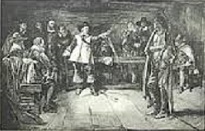
About 1670 Dutchmen like to bowl at the Old King’s Arms Tavern near modern-day 2nd and Broadway in New York City.
In 1677 Stephanus Van Cortlandt (1643-1700) becomes the first native-born mayor of New York City (#10) (until 1678, then again as mayor #17 in 1686-8).
On Oct. 30, 1683 the New York Charter of Liberties and Privileges is passed, becoming the first act of its kind in the Am. colonies; it is suspended in 1685, then reenacted via a new charter in 1691, which stays in effect until the 1776 Am. Rev.
In 1690 there is a yellow fever epidemic in New York.
On May 1, 1690 the first intercolonial congress in North Am. history meets in New York City to plan united action against the French and Indians; meanwhile the king appointed Col. Henry Sloughter (-1691) as new gov. of N.Y. last Sept. 3, and he doesn't arrive until next Mar.
On Jan. 28, 1691 British Maj. Richard Ingoldesby (-1719) arrives in New York City with two cos. of soldiers and demands Ft. James; on Mar. 17 Leisler's men refuse and start shooting, killing two and wounding several soldiers; on Mar. 19 new New York gov. Col. Henry Sloughter (-1691) arrives, and after Jacob Leisler hesitates to turn over his authority, the new gov. charges him with treason, and on May 16 he and his son-in-law Jacob Milborne are hanged, ending Leisler's Rebellion (begun 1689); Sloughter then dies and Ingoldesby takes over as gov. until next year, when Benjamin Fletcher (1640-1703) takes his place (until 1697); in 1695 Parliament exonerates them of all charges, but New York is split into two factions for years afterwards; Capt. William Kidd (not yet a pirate) is given a £150 reward by the council of New York for loyal service in the revolt.
In 1691 English-born Philly Quaker printer William Bradford (1663-1752) is arrested and tried for "seditious libel", and his press and pubs. confiscated; in 1693 the jury refuses to convict him, becoming the first case of freedom of the press in Am., and in Apr. 1893 the New York City council invites him to establish the first press in that colony, and he eagerly skedaddles from Quakerland.
In 1725-1800 there are 137 newspapers pub. in N.Y. state, incl. 20 in New York City; by 1865 there are 373 newspapers being pub. in 428 eds. in N.Y., incl. 54 in New York City.
In 1730 Jewish colonists build Shearith Israel in New York City, becoming the first synagogue in North Am.
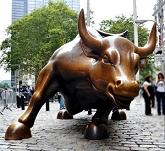
In 1733 the govt. of New York City authorizes the old Dutch parade ground at the S end of Broadway adjoining Ft. Amsterdam E of Battery Park to be established as a "bowling green... for the recreation and delight of the inhabitants of the city", known as Bowling Green, where ninepins (bowling) is played for the first time in New York City?; it becomes the center of the exclusive residential district and the oldest public park in New York City to survive to modern times; in 1989 it becomes host to the Charging Bull bronze sculpture by Arturo Di Modica (1960-), and is used as the starting point for ticker tape parades into the "Canyon of Heroes" (Broadway).

In 1760 super-educated minister-scientist-physician Cadwallader Colden (1688-1776) (the first English colonial rep. to the Iroquois Nation) becomes acting British gov. of New York (until 1762, then 1763-5 and 1769-71), going on to stick it to the rebels for being too uneducated to see the advantages of staying loyalist.
In 1765 a pirate is hanged on Gibbet Island, known as Oyster Island by the Dutch, and later called Ellis Island after New York City merchant Samuel Ellis buys it later this cent.
In 1783 the pop. of New York City doubles over the next two years to 24K.
In 1790 the First (1st) U.S. Census (Aug. 1), run by U.S. secy. of state Thomas Jefferson reports the total pop. as 3,929,214, in a land area of 864,746 sq. mi., for a pop. density of 4.5 per sq. mi.; that's 3,277,000 white inhabitants (80.7%), 698K slaves, and 59K freed slaves; a total of 410,636 families, of which 47,664 own slaves; 40K are Irish-born, and 160K are of Irish descent; the pop. of New York City (which had been nearly deserted in 1776) is back up to a whopping 33K; Penn. is the most populous state with 434,373 pop.; the U.S. Jewish pop. is about 2K, mainly Sephardim, although Ashkenazim from C and E Europe are beginning to arrive; Mass. is the only state to record no slaves; only 5% of the pop. lives in cities; by 2000 the pop. of Puerto Rico alone is 3.9M.
On Jan. 3, 1791 the Methodist Episcopal (Old) New York Hospital (planned since 1769) opens, becoming the first public hospital in Brooklyn, N.Y. (40 years after Philly), and the first Methodist hospital.
Back it up, hook it up, and don't look back? Don't just stand there, say something? Breathtaking? On May 17, 1792 after a meeting by 24 traders under a buttonwood tree at 68 Wall Street in New York City, the Buttonwood Agreement creates the New York Stock and Exchange Board, the precursor of the New York Stock Exchange (1817); in 1863 it shortens the name to New York Stock Exchange (NYSE).
In 1792 Cadwalader, Wickersham & Taft LLP is founded in New York City, becoming the oldest continuously-operated U.S. law firm to survive to modern times (until ?).

In 1793 there is an influenza epidemic in Vt., Va., and Penn.; America's first local health dept. with a permanent board of health is formed in Baltimore, Md., followed by New York City, formed to stave off a a yellow fever epidemic in Philadelphia in Aug.-Nov. that kills 5K of 50K and nearly destroys the city after 20K flee by Sept., causing Philly surgeon Philip Syng Physick (1768-1837) to step up, coming up with new surgical methods and tools, becoming known as the "Father of Am. Surgery"; too bad, yellow fever reaches New York City, killing hundreds and causing more to flee.

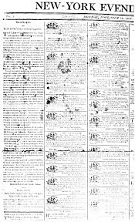
On Nov. 16, 1801 after getting pissed-off at the election of Dem.-Repub. Party leader Thomas Jefferson (1743-1826), the tabloid newspaper New York Post (originally New-York Evening Post) is founded in New York City by Founding Father Alexander Hamilton (1755-1804) and other Federalists with $10K "to inculcate just principles in religion, morals and politics", becoming the oldest daily newspaper in the U.S. to survive to modern times, with a modern-day circ. of 500K.
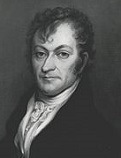
In 1801 Edward Livingston (1764-1836), younger brother of Robert R. Livingston of La. Purchase fame becomes Dem.-Repub. mayor #46 of New York City (until 1803) as well as U.S. atty. for N.Y., showing heroism in fighting the yellow fever in summer 1803 until he contracts the fever himself, recovering only to find that one of his clerks mismanaged funds, causing him to resign and move to New Orleans, La. to practice law, repaying the debt with interest by 1826 while becoming friends with Andrew Jackson, becoming a U.S. rep. in 1823-9, U.S. sen. in 1829-31, U.S. secy. of state #111 in 1831-3, and U.S. minister to France in 1833-5. In 1821 Livingston drafts the La. Civil Code, based on the Napoleonic Code to go with his La. (Livingston) Criminal Code, abolishing capital punishment and making prison labor a reward that brings better accommodations.

In 1803 Little Britain, N.Y.-born DeWitt Clinton (1769-1828), nephew of U.S. vice pres. (since 1805) and N.Y. gov. #1 (1777-95, 1801-4) George Clinton becomes Dem.-Repub. mayor #47 of New York City (until 1810, then 1811-15); in 1811-13 he also becomes N.Y. lt. gov., followed by N.Y. gov. #6 in 1817-22 and 1825-8, going on to become known as "the Father of the Erie Canal".
In 1804 fur tycoon John Jacob Astor takes advantage of Aaron Burr's troubles to purchase his 99-year lease on land in Manhattan, N.Y. (which ends on May 1, 1806) for $62.5K, subdividing it into 250 lots, which he subleases for 21 years and makes mucho money from.


In 1807 New York City-born Washington Irving (OE "sea friend") (1783-1859), along with William Irving and James Kirke Paulding (1778-1860) pub. Salmagundi; Or, The Whimwhams and Opinions of Launcelot Langstaff, giving the name Gotham to New York City. In 1809 he pub. Diedrich Knickerbocker's History of New York (A History of New-York from the Beginning of the World to the End of the Dutch Dynasty), about the early Dutch settlers and their descendants, based on Harmen Jansen Knickerbocker (1648-1721); Diedrich dresses in baggy-kneed knickerbocker trousers; Santa Claus is depicted wearing a broad-brimmed hat and smoking a long pipe - Washington goes from being the Father of Our Country to the Myth-Maker of New York City? In 1814 he pub. Philip of Pokanoket, which glorifies Indian chief King Philip (d. 1676). On June 23, 1819-July 1820 he pub. The Sketch Book of Geoffrey Crayon, Gent., which incl. Rip Van Winkle ("It's been 20 years since he went away with his gun") (first mention of the game of ninepins in Am. lit.), The Legend of Sleepy Hollow (The Headless Horseman) Conn. schoolteacher Ichabod Crane of Greensburgh (Tarry Town) competes for the hand of 18-y.-o. Katrina Van Tassel with Abraham "Brom Bones" Van Brunt, who tries to scare him off by dressing up as the Hessian Headless Horseman; "If I can just reach that bridge, I'm safe." In 1820 he pub. The Sketch Book of Geoffrey Crayon, Gent.. In 1822 he pub. Bracebridge Hall. In 1833 he pub. The Alhambra. Meanwhile in 1813 Paulding pub. The Diverting History of John Bull and Brother Jonathan. In 1825 he pub. Konigsmark, the Long Finne (2 vols.). In 1826 he pub. The Merry Tales of the Three Wise Men of Gotham. In 1830 he pub. the play The Lion of the West, a satire of Davy Crockett as Nimrod Wildfire, which becomes the biggest hit on the Am. stage until "Uncle Tom's Cabin". In 1831 he pub. The Dutchman's Fireside. In 1832 he pub. Westward Ho! In 1838 he pub. A Christmas Gift from Fairy Land. In 1838 Paulding becomes U.S. Navy secy. #11 (until Mar. 4, 1841), going on to stink himself up by his opposition to steam-propelled warships, with the soundbyte "I would never consent to let our old ships perish, and transform our Navy into a fleet of sea monsters." In 1846 he pub. The Old Continental, or the Price of Liberty. In 1849 he pub. The Puritan and His Daughter.
In 1810 The Third (3rd) U.S. Census reports the total pop. as 7,239,881 in a land area of 1,681,828 sq. mi. (4.3 per sq. mi.); black 1.378M; free black 186K; New York City: 97K.
In 1811 new N.Y. lt. gov. (until 1813) DeWitt Clinton (1769-1828) goes to Congress to ask for funds for "the ditch" (Erie Canal) - who can say no to a man with this pedigree?

In 1811 the 2-story Federal style New York City Hall is completed, complete with a copper roof.
On Jan. 22, 1814 the first Knights Templar Grand Encampment is held in New York City.
In 1817 Yorkshire, England-born Quaker merchant Jeremiah Thompson (1784-1835) et al. found the Black Ball Line, running four packet ships once a month between New York City and Liverpool, England, becoming the first regularly scheduled shipping route in the U.S., contributing to making New York the dominant port in the U.S.; its flag features a black ball on a red background.
In 1817 the Richmond Turnpike Co. begins operating the steam-powered Nautilus between New York City and Staten Island, captained by John De Forest, brother-in-law of 17-y.-o. Cornelius Vanderbilt (1794-1877) sets up the Staten Island Ferry; in 1838 Vanderbilt buys control, selling it to his brother Jacob Vanderbilt of the Staten Island Railway during the U.S. Civil War (1861-5), which opens in 1860; on July 30, 1871 (1:30 p.m.) the Westfield suffers a boiler explosion while sitting at South Ferry, killing 85+ and injuring hundreds, causing owner Jacob Vanderbilt to be tried and acquitted of murder; by 1900 the fare is 5 cents, rising to 50 cents in 1990, pissing-off Staten Islanders, who vote in 1993 to secede from New York City and help Rudy Giuliani become New York City mayor, finally becoming free on July 4, 1997.
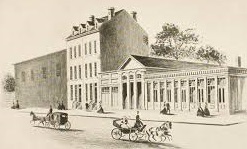
In 1823 Niblo's Garden on Broadway near Prince St. in Manhattan, N.Y. is founded as Columbia Garden, acquired in 1828 by Irish-born coffeehouse owner William Niblo (1790-1878), who turns it into the San Souci theater, and Niblo's Theater in 1834, going on to host P.T. Barnum's first exhibition 1835 and form a vaudeville co. in summer 1837; after being destroyed by a fire on Sept. 18, 1846 and reopened in summer 1849 with 3.2K cap. ($2/seat), it begins producing Italian opera, becoming the best-equipped and most fashionable theater in New York City; it is destroyed by fire in 1872 and rebuilt by dept. store magnate A.T. Stewart; the final performance is given on Mar. 23, 1895.
On Aug. 24, 1824 old fart Am. Rev. War hero Gilbert du Motier, Marquis de Lafayette (1757-1834) arrives in New York City as a "guest of the nation" to begin a year of being feted; New Yorkers become embarrassed when they realize they have no fine restaurants to toast him in, only oyster bars and taverns; on Sept. 2 he visits Concord, Mass., where a speech made by Samuel Hoar that Concord is the spot where "the first forcible resistance" to British arms was made starts an eternal spitting war with nearby Lexington; since he's a friend of Nelly Custis Lewis, Laffy stays at Woodlawn Plantation in Mount Vernon, Va., and spends a week with Thomas Jefferson in Monticello, Va., after which the wine cellar has to be restocked.
On Oct. 26, 1825 the $7M 363-mi. Erie Canal (begun 1817) between Buffalo on Lake Erie and Albany on the Hudson River opens, improving transport of Midwestern goods to the Atlantic through New York City, esp. salt from Syracuse, N.Y., giving it the name "the canal that salt built"; "A great channel of communication, executed in eight years" (Lafayette's secy.); travel time between the east coast and the Ohio and Mississippi Valleys is cut by 66%, and the cost is cut by 90%, causing New York City to become the #1 Atlantic seaboard port; the Midwestern dairy industry begins its rise as Euro demand increases; the 3-masted sailing ship Sarah Sheafe begins service between New York City and Liverpool (until 1840).
About 1830 the Bowery Boys, a loose gang of anti-Irish anti-Roman Catholic nativists based in the Bowery (Five Points) neighborhood of Manhattan, N.Y. (known for wearing stovepipe hats, red shirts, and dark trousers tucked into their boots as homage to volunteer firemen) fights the tide of Irish immigrants, incl. the Dead Rabbits, fighting 200+ battles in 1934-44, incl. the Dead Rabbits Riot of July 4-5, 1857, culminating in an all-out street war during the New York City Draft Riots of July 13-16, 1863 (2nd largest civil insurrection in U.S. history after the U.S. Civil War), as portrayed in the 2002 Martin Scorsese film "The Gangs of New York". Watch video. Watch video. Watch video. Watch video. Watch video.
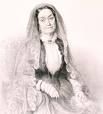
In 1833 Eliza Bowen Jumel (1769-1865), widow of wealthy French merchant Stephen Jumel marries Aaron Burr in the Tea Room of the Morris Mansion in New York City (160th St. and Edgecombe Ave.), built in 1765 by British Loyalist Capt. Roger Morris and used as HQ during the Am. Rev. by Am. Gen. George Washington and British Gen. Sir Henry Clinton; too bad, after he loses some of her money in Texas land speculation, she separates from him for life without a formal divorce, moving to New York City.


On May 6, 1835 the New York Herald newspaper (four pages for a penny), ed. by Scottish-born James Gordon Bennett Sr. (1795-1872) begins pub. in the cellar of #20 Wall St. in New York City, going on to print the first Wall Street financial article and report the first political speech in full, that of John Calhoun on the Mexican War, received by telegraph, making use sensationalism to become the #1 newspaper in the U.S. by 1845, reaching 84K circ. in 1861 before he turns the paper over to his son James Gordon Bennett Jr. in 1866; it ceases pub. in 1924, becoming the namesake of Herald Square (S of Times Square), and acknowledged in the 1904 song "Give My Regards to Broadway" ("Remember me to Herald Square").
On Dec. 16, 1835 the 1835 Great Fire of New York breaks out in New York City, destroying 17 city blocks and 530 bldgs., incl. most of the original New Amsterdam, killing two and doing $20M damage.


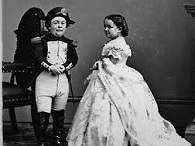
In 1835 Bethel, Conn.-born Phineas Taylor "P.T." Barnum (1810-91) begins his huckster career by exhibiting Joyce (Joice) Heth (1674-), a black woman alleged to be George Washington's nurse and only 160 years young; one of his most favorite stunts was to display a big sign reading "This Way to the Egress", and when suckers followed it they ended up in the alley, because egress means exit. In 1841 he purchases the American Museum in New York City at the corner of Broadway and Ann St., starting it out as a freakshow, and operating it until it burns down on July 13, 1865, coining the slogan "There's a sucker born every minute." In 1850 he brings "Swedish Nightingale" Jenny Lind (1820-87) to New York City, where her hotel is mobbed by 20K adoring fans - the original American Idol? In 1855 P.T. Barnum, known for the saying "there's a sucker born every minute" proves himself a you know what by losing $500K in the Jerome Clock Co. Swindle, causing him to file for bankruptcy and contemplate suicide. On Feb. 10, 1863 after refusing $15K from P.T. Barnum to delay it so he can arrange more publicity, 3'3" "General" Tom Thumb (Charles Sherwood Stratton) (1838-83) weds Lavinia Warren (1841-1919) in New York City's Grace Episcopal Church - don't ask?
In fall 1837 one-third of the U.S. work force is jobless, and within two years those with a job receive a wage cut of 30-50%; meanwhile prices soar, and by winter there are 200K homeless people in New York City, and no govt. safety net; in Sept. Pres. Van Buren calls a special session of Congress which votes to postpone indefinitely the distribution of the surplus in case of a future deficit, and approves a new issue of Treasury notes to cover immediate expenses.
In 1845 the New York Muncipal Police is founded by the N.Y. Legislature via the Municipal Police Act, recruiting 1.2K mainly fresh-off-the-boat Irish immigrants, with George Washington Matsell (1811-77) (who organized night patrols along the riverfront and lobbied for it) as police commissioner #1, becoming known for massive corruption.
On Sept. 27, 1849 Irish-born Thomas Lynch of the New York Municipal Police (established 1845) becomes the first NYPD cop to die in the line of duty.
In the 1850s New York City imports (house) sparrows from Germany as a defense against caterpillars, but they end up becoming a terrific pest - excuse me while I slip into something fabulous?
On May 3, 1850 the Internat. Typographical Union (ITU) is founded in New York City.
In 1850 the New York City fathers begin buying the land for Central Park (ends 1856).





On Sept. 18, 1851 The New York Times (NYT) begins pub., ed. by Henry Jarvis Raymond (1820-69), who goes on to become an Abe Lincoln supporter; in 1896 it is purchased by Jewish publisher Adolph Simon Ochs (1858-1935), who passes it to his son Arthur Hays Sulzberger (1891-1968), who passes it to his son Arthur Ochs "Punch" Sulzberger Sr. (1926-2012), who passes it to his son Arthur Ochs Sulzberger Jr. (1951-).
On Dec. 16, 1852 the Washington Star (originally the Daily Evening Star) newspaper is founded in New York City by Capt. Joseph Burrows Tate; it ceases pub. on Aug. 7, 1981 after 128 years.
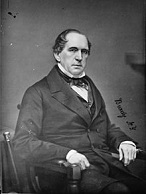
On Apr. 2, 1853 the New York Central Railroad, run by former Albany, N.Y. Dem. mayor (1834-7) Erastus Corning Sr. (1794-1872), founder of the Rensselaer Iron Works (which installed the first Bessemer converter in the U.S.), is founded via a merger of nine railroads operating between Albany, N.Y. and Buffalo, N.Y., expanding to New York City, Boston, Mass., Chicago, Ill., and Cleveland, Ohio.

On Dec. 31, 1854 Philly-born Tammany Hall Dem. Fernando Wood (1812-81) is elected mayor #73 of New York City (until Dec. 31, 1858), fighting to control the corrupt New York Muncipal Police (founded 1845).
In 1855 Castle Garden (AKA Castle Clinton or Ft. Clinton) in Battery Park on the S tip of Manhattan in New York City opens as the first U.S. immigration station, processing 8M immigrants by the time it closes in 1890.

In 1856 the Repub.-controlled N.Y. State Legislature in Albany goes after Dem. New York City mayor Fernando Wood, shortening his term of office from two years to one, and creating the Metropolitan Police Force, headed by Frederick Augustus Tallmadge (1792-1869) (until 1862) to replace Wood's corrupt Municipal Police; when Wood refuses to disband it, the N.Y. Supreme Court rules next May to back the legislature, but the Municipal Police under supt. George Washington Matsell (1811-77) along with 15 captains and 800 patrolmen back Wood, causing a showdown.
On June 16, 1857 the Great New York City Police Riot of 1857 sees the New York City Metropolitan Police order Muncipal Police Capt. George Washington Walling to arrest mayor Fernando Wood in city hall, causing Wood's Muncipal Police to chuck Walling into the street, causing 50 Metropolitan Police to march in with nightsticks, and lose to the Metropolians, with 52 injured, after which the Nat. Guard 7th Regiment surrounds City Hall and arrests Wood, who is released on bail and returns to iffice, er, office; the feud rages through the summer, allowing gangs to take over the city, while criminals arrested by one police force are summarily released by judges loyal to the other force; Walling becomes police suptd. in 1874-85.
On July 4-5, 1857 taking advantage of the police anarchy, the Dead Rabbits Riot in the Bowery in Lower Manhattan, N.Y. between the Irish Dead Rabbits gang and the Protestant nativist Bowery Boys kills eight and injures 30-100.

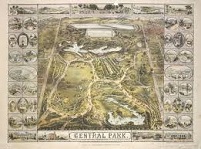
In 1857 a competition is held to design 778-acre city-owned Central Park in Manhattan, N.Y., and the winner is Frederick Law Olmsted (1822-1903), who becomes known as the "Father of U.S. Landscape Architecture"; it opens to the public next winter; in 1873 it is expanded to 843 acres; in 1962 it is designated a nat. historic landmark; in Apr. 2017 it is placed on the UNESCO World Heritage site list.

On Dec. 31, 1858 New York City mayor #73 (since Jan. 1 1855) (grand sachem of Tammy Hall) Fernando Woods is defeated for reelection by Daniel Fawcett Tiemann (1805-99) (nephew-in-law of Peter Cooper) by 3K votes despite the Dead Rabbits gang stuffing the ballot box using names from city cemeteries; in 1860 Wood is elected for a 2nd term (until 1862).
In the 1860s the theatrical district of New York City becomes concentrated along the Bowery, an avenue parallel to Broadway between Chatham Square and Cooper Square which was originally an Indian trail, then the road to the farm (bouwerij) of Gov. Peter Stuyvesant; by 1870 it becomes a center of vice, and by the end of the cent. is a center for Yiddish theater.

In Jan. 1861 2nd term Tammany Hall Dem. New York City mayor (1860-2) Fernando Wood (1812-81) leads the pro-Confed. Copperheads, asking the city council to declare New York City a free city to allow it to continue its cotton trade with the Confeds., and when they deride him he splits with Tammany Hall to form his own Mozart Hall political machine.

On July 11, 1863 a draft lottery is announced in New York City, followed on July 12 by the first roll of draftees published alongside the roll of the dead at Gettysburg, sparking the poor and working class (half of the 1M pop.) (mostly Irish immigrants), incensed at wealthy Repub. Protestants trying to send them to die for black slaves who will end up stealing their jobs, to take it out on them all fiercely in the New York City Draft Riots on July 13-16, becoming the worst riots in U.S. history (until ?), four days of looting, arson, lynching and murder killing 105 (official) (more like 500?) and injuring 2K+, and forcing thousands of blacks to flee the collapsing city; on July 16 tired Union troops from Gettysburg end the and restore order; $2M in property is destroyed; a cent. of repression of blacks and harsh treatment of labor protests follows - the pig cannot come in but the animal we'll take?
On Aug. 12, 1861 P.T. Barnum exhibits a hippopotamus in his Am. Museum in New York City.
In 1863 400-acre Woodlawn Cemetery in Woodlawn, Bronx, Westchester County, N.Y. opens, becoming the cemetery of choice of Am. artists, eventually housing 300K incl. celebs Herman Melville, Nellie Bly, Countee Cullen, Irving Berlin, Duke Ellington, W.C. Handy, Max Roach, and Miles Davis; the rage of picknicking in cemeteries begins in the 1880s, dying out in the 1920s.

On Nov. 2, 1864 the New York 19th Century 9/11 sees New York City mayor (1864-6) Charles Godfrey Gunther (1822-85) (a Dem.) receives a telegram from U.S. secy. of state William H. Seward warning him of a Confed. plot to burn the city down on election day (Nov. 8), causing Union troops under Gen. Benjamin Franklin Butler to occupy the city; on Nov. 25 (Evacuation Day), pissed-off Confed. agents led by Col. Robert Martin, (former subordinate of John Hunt Morgan) stage the New York Attack, setting fire to several crowded hotels to get even for the devastation of the Shenandoah Valley, after which on Nov. 26 police round up 200 suspects, and the Hotel Keepers' Assoc. offers a $20K reward, which doesn't stop the eight rebels from slipping back into Canada; Robert C. Kennedy is later caught trying to rescue some Confed. gens., and hung on Mar. 25, 1865 at Ft. Layfette in New York Harbor, becoming the last Confed. soldier executed by the Union; the whole episode terrorizes New York City, becoming their first 9/11, plus a deja vu for the assassination of JFK and RFK, compounded by the fact that on Nov. 25 brothers Edwin, Junius Jr., and John Wilkes Booth first perform together in the Winter Garden in Shakespeare's "Julius Caesar".
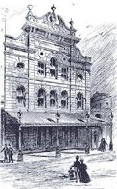
In 1865 Madison Square Theatre (AKA Fifth Ave. Theatre) at Broadway and West 24th St. between Sixth Ave. and Broadway near the Fifth Ave. intersection in Manhattan, N.Y. (cap. 1K) opens, staging Divorce by Augustin Daly in 1871 for 200 perf., going on to pioneer advances in stage technology, theater design, and tour mgt.; it is demolished in 1908.
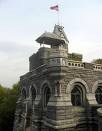
In 1865 the Tweed Ring saps big bucks out of the budget for the New York County Courthouse N of City Hall, keeping it from being finished to keep their sluice open; meanwhile Belvedere Castle is built in Central Park, soon hailed as a "folly".
On Apr. 6, 1869 the Am. Museum of Natural History and the Am. Museum of Natural History Library are founded in New York City at Central Park West and 79th St.


 In Sept. 1869 German-born Harper's Weekly cartoonist Thomas Nast (1840-1902)
begins his campaign against corrupt nasty New York City Tammany Hall politician William Magear "Boss" Tweed (1823-78) (who stole $30M-$200M) ,
after which he is finally convicted in 1873 of embezzlement and larceny and given a 12-year prison sentence, gets it reduced to 1 year, then ends up in debtors' priz after being sued by
New York State for $6M, then is sent to Ludlow Street Jail, escaping on Jan. 3, 1875 and fleeing to Cuba, finally bribing his way to Spain, where he is caught and extradited, and returned to jail,
where he croaks from pneumonia in 1878; the whole episode makes Thomas Nasty a nice guy hero.
In Sept. 1869 German-born Harper's Weekly cartoonist Thomas Nast (1840-1902)
begins his campaign against corrupt nasty New York City Tammany Hall politician William Magear "Boss" Tweed (1823-78) (who stole $30M-$200M) ,
after which he is finally convicted in 1873 of embezzlement and larceny and given a 12-year prison sentence, gets it reduced to 1 year, then ends up in debtors' priz after being sued by
New York State for $6M, then is sent to Ludlow Street Jail, escaping on Jan. 3, 1875 and fleeing to Cuba, finally bribing his way to Spain, where he is caught and extradited, and returned to jail,
where he croaks from pneumonia in 1878; the whole episode makes Thomas Nasty a nice guy hero.

In 1871 Grand Central Terminal in midtown Manhattan, N.Y. at 42nd St. and Park Ave. opens, built by the New York Central and Hudson River Railroad, containing 44 platforms (most on Earth), all below ground, serving 30 tracks on the upper level and 26 on the lower level, and 100+ total tracks; it is rebuilt in 1913, and 1994-2000; the nearby U.S. post office at 450 Lexington Ave. is called Grand Central Station.
In the 1880s more thanr 5.2M immigrants arrive in the U.S., mostly from E Europe incl. many non-Protestants, causing an increasing split with the old immigrants; most of them stay in New York City, increasing its pop. by 25%, resulting in vast areas filled with slums; in 1889 an elevated railway is built in the Bowery, accelerating its slide into slums, allowing pioneer photojournalist Jacob Riis to shock the country with his 1890 pub. "How the Other Half Lives: Studies among the Tenements of New York".
In 1880 Queen Victoria presents U.S. Pres. Rutherford B. Hayes with the Resolute Desk, built from the timbers of the British ship HMS Resolute, which becomes a favorite of every succeeding pres. except LBJ, Nixon, and Ford. After the Egyptian govt. gives it as a gift, Cleopatra's Needle arrives in New York City to a big celebration, with 9K Freemasons parading on Fifth Ave. with the pedestal, while the 69-ft. 220-ton shaft is dragged across Manhattan from the banks of the Hudson River for 112 days and installed W of the new Metropolitan Museum of Art.





Guiteaulong Little Doggies, 200 days if enough? On July 2, 1881 (Sat.) (9:30 a.m.) 200 days after taking office and two weeks after uttering the soundbyte: "Whoever controls the volume of money in our county is absolute master of all industry and commerce.. And when you realize that the entire system is very easily controlled, one way or another, by a few powerful men at the top, you will not have to be told how periods of inflation and depression originate", U.S. pres. #20 (since Mar. 4) James Abram Garfield (b. 1831) is shot in the back at the Baltimore and Potomac Rarilroad Station in Washington, D.C. by Freeport, Ill.-born disgruntled atty. and disappointed office ssker Charles Julius Guiteau (1841-82) (who spent five years in the Oneida Community in Upstate N.Y., whose enjoyment of the sexual communism was ruined when women complained that he smelled?), who shouts "I am a stalwart and now Arthur is president"; on Sept. 19 as the nation is flooded with sometimes hourly reports on his condition, Garfield dies in Elberon, N.J. after 80 days of malpractice by physicians who stick unwashed instruments and fingers in him searching for the bullet, while Alexander Graham Bell tries in vain to help with a metal detector (coil mattress springs throw it off?); the bullet is found during the autopsy in a protective cyst 10 in. from the wound, but since the doctors didn't embrace the antiseptic techniques of Joseph Lister (1827-1912), he dies from iatrogenic (doctor-caused) infections, causing Guiteau to say, "Doctors killed Garfield; I just shot him"; Garfield, who is pres. for less than 8 mo. signs one extradition paper during his fatal illness; Guiteau is hanged in Washington, D.C. on June 30, 1882; Garfield and Guiteau are autopsied by the Nat. Museum of Health and Medicine (Army Medical Museum) in Silver Spring, Md. (founded 1862); Garfield becomes the 3rd straight victim of the Zero-Year Presidential Curse (after W.H. Harrison and Lincoln); future Repub. vice-pres. #22 (1889-93) Levi Parsons Morton (1824-1920) had been asked by Garfield to be his running mate, but had preferred the job of U.S. minister to France (until 1885), causing Guiteau to feel he had been "passed over", giving him the reason to murder Garfield?; on Sept. 20 at 2:15 a.m. Fairfield, Vt.-born "Dude President" Chester Alan Arthur (1829-86) becomes the 21st U.S. pres. (until 1885) in the 28th U.S. Pres. Inauguration in his office at 123 Lexington Ave. in New York City (4th U.S. pres. not to have a vice-pres. after Tyler, Fillmore, and Johnson - next in ?); 2nd time that the U.S. has three presidents in the same year (Hayes, Garfield, Arthur) (first time 1841); a recent (1880) widower, he snubs Garfield's widow and uses his sister Mary Arthur (Mrs. John E.) McElroy (1841-1917) as his White House hostess, and won't move into the White House until it is redecorated by Louis Comfort Tiffany (1884-1933), who adds Tiffany glass to gaslight fixtures and windows, and installs an opalescent floor-to-ceiling glass screen in front of the entrance hall, all of which Teddy Roosevelt removes in 1902 to restore the White House to Federal style; Arthur appoints Ind. U.S. District Judge (since 1869) (former Civil War Union Maj. Gen. from Ind.) Walter Quintin Gresham (1832-95) as postmaster-gen. then treasury secy. (until 1884); in Dec. James G. Blaine resigns because of Arthur's connections with his political enemy Roscoe Conkling; when Arthur actually acts like a pres. and backs civil service reform and even prosecutes his own former political associates for graft, he becomes a lame duck, losing machine support while failing to win the reformers over, his lackadaisical presidency completing the migration of pres. powers to the Congress that is later reversed by presidents Teddy Roosevelt, Woodrow Wilson et al.
On Sept. 4, 1882 (3:00 p.m.) the Edison Electric Illuminating Co. opens the first commercial power plant in the U.S. on Pearl St. in Lower Manhattan, New York City.


On May 24, 1883 (2 p.m. ET) the 5,989-ft. x 85 ft. Brooklyn Bridge over the East River linking Manhattan and Brooklyn, designed by German-born civil engineer John Augustus Roebling (1806-69) opens, becoming the first modern suspension bridge and the first land passage between Manhattan and Brooklyn; one of the bridge supports sits on the site of the first U.S. pres. exec. house; 1.8K vehicles and 150,300 people cross on the first day; on May 30 a rumor that the bridge is about to collapse causes a stampede, and 12 people are trampled to death.
In 1883 The Metropolitan Opera House moves to West 39th St. and Broadway, ramping up the Manhattan Theater District, bounded by West 40th St., West 54th St., Sixth Ave., and Eight Ave., incl. Times Square; meanwhile in 1880 the section of Broadway that runs through it between 42nd and 53rd Streets is built, later called the Great White Way, gaining its name from its Brush arc lamps after becoming one of the first U.S. thoroughfares to be illuminated with electricity; the term is first used by Shep Friedman in the New York Morning Telegraph in 1901.




On Oct. 28, 1886 (Thur.) the 305' 1" 225-ton (heaviest in the world) "harbor chick" Statue of Liberty (AKA Liberty Enlightening the World), built by Dijon-born Alexandre Gustave Eiffel (Bonickhausen) (1832-1923) and designed by Frederic Auguste Bartholdi (1834-1904) of Alsace (a recycled version of "Egypt Bringing Light to Asia", once planned for the entrance to the Suez Canal, with the Roman goddess Libertas robed as an Egyptian fallaha peasant) is dedicated at Liberty (formerly Bedloe's) Island in New York Harbor "beside the golden door"; the base is an 11-pointed star constructed from the remains of Ft. Wood; the seven spikes in the crown signify the seven seas and continents; the right hand of the 152-ft. steel-reinforced copper-clad Lady Liberty on a 150-ft. pedestal holds a torch aloft, while her left hand carries a book inscribed "July IV MDCCLXXVI"; the sonnet The New Colossus, by Jewish-Am. poet Emma Lazarus (1849-87) is engraved on a tablet inside the pedestal, cementing the purpose as the welcoming of er, white immigrants; "Give me your tired, your poor/ Your huddled masses yearning to breathe free,/ The wretched refuse of your teeming shore,/ Send these, the homeless, tempest-tost to me,/ I lift my lamp beside the golden door!"; on Oct. 29 the first-ever ticker tape parade is held for Lady Liberty in New York City, with workers spontaneously throwing ticker tape out of brokers' windows, while Pres. Grover Cleveland accepts the statue for the U.S.
On Mar. 11-14, 1888 the Great Blizzard of 1888 (March Blizzard) (White Hurricane) in the NE U.S. from Chesapeake Bay to Maine drops 20-60 in. of snow (incl. 21 in. in New York City), with 80 mph winds causing 20-50 ft. snow drifts, killing 400+ and grounding or wrecking 200+ ships, and causing $25M in damage, trapping people in their houses for up to a week; after railway and telegraph lines are disabled, plans are made to move them undeground resulting in the Boston, Mass. subway system in 1897; later, floods from melting snow compound the damage.
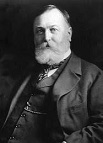
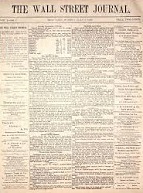
On July 8, 1889 Dow, Jones & Co. of New York City begins pub. the daily business-focused newspaper The Wall Street Journal (originally the Customers' Afternoon Report), featuring the Dow Jones Average; in Mar. 1903 "short rotund powerhouse" Am. journalist Clarence W. Barron (1855-1928) purchases the co. for $130K, raising circ. from 7K to 50K by his death, attaining the largest circ. of any U.S. newspaper by modern times (2.27M in 2017), winning 40 Pulitzer Prizes; it launches an online version in 1996.

In 1890 the Eleventh (11th) U.S. Census reports the total pop. as 62,947,714 (21.2 per sq. mi.); New York City: 1.341M; the German pop. of the U.S. is now at 2.8M, a majority within the German Triangle of Cincinnati, Milwaukee, and St. Louis; 75% of the pop. of Chicago are immigrants or children of immigrants, with Germans topping the list at 29%; since 1820 15.6M people have immigrated to the U.S. through New York Harbor and/or Ellis Island: 4.6M from Germany, 3.5M from Ireland, 2.5M from England, 0.9M from Norway-Sweden, 0.46M from Austria-Hungary, 0.41M from Italy, 0.37M from France, 0.36M from Russia-Poland, 0.33M from Scotland, 0.29M from China, 0.17M from Switzerland, 0.15M from Denmark, 1.03M from British North Am. possessions, 0.61M from all other countries; on apr. 18 the U.S. govt. assumes control of immigration, causing Congress to appropriate $75K to construct the first U.S. federal immigration station on Ellis Island, which originally were part of the Oyster Islands, called Gibbet Island in the 1760s, then acquired in the 1770s by merchant Sammuel Ellis, who leases it to the state of N.Y. in 1794. On Jan. 1, 1892 after Castle Garden becomes unable to accommodate the flow, Ellis Island in Upper New York Bay about 1 mi. SW of Battery Park opens as the first Federal Immigration station, no longer under the control of New York and its famous corruption, which let "paupers" and other "undesirables" in; instead, the feds begin to close immigration down in their own, more bureaucratic way; between this year and 1924 22M immigrate; the first immigrant this year is 15-y.-o. Annie Moore (1877-1924) (born on Jan. 1) from Ireland; she dies poor in Lower East Side, N.Y. as Annie Moore Schayer.
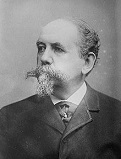
In 1890 Samuel Ward McAllister (1827-95) pub. Society As I Have Found It; adviser to "the Mrs. Astor" Caroline Schermerhorn Astor, who together created the List of 400 that defines who's the Nobs (old money, who trace their lineage back to colonial New Amsterdam) and who's the Swells (new money) in New York City fashionable elite society (the Tong), with at least three generations of wealthy ancestors who never worked in the trades required to be a Nob; too bad, the Nobs don't like publicity, turning him into a pariah.

In 1890 Danish-born Am. muckraking journalist Jacob August Riis (1849-1914) pub. How the Other Half Lives: Studies Among the Tenements of New York, containing shocking photos of living conditions in the Big Apple, kick-starting the Progressive Era.

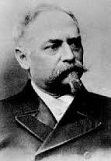
In Apr. 1891 Carnegie Hall two blocks S of Central Park at 881 Seventh Ave. between West 56th St. and West 57th St. in midtown Manhattan, N.Y. (cap. 3,671) opens, built by philanthropist Andrew Carnegie and designed by architect William Burnet Tuthill (1855-1929), becoming one of the top classical and popular music venues on Earth.

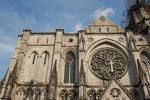
On Dec. 27, 1892 Protestant Episcopal bishop of the Diocese of New York #7 Henry Codman Potter (1834-1908), defender of the saloon as the "poor man's club" starts building the Cathedral of St. John the Divine at 112th St. and Amerstdam Ave. in New York City; it is planned to be the world's largest cathedral, 601 ft. long, 146 ft. at the nave, 320 ft. at the transept; the east end is in Romanesque-Byzantine style, the nave and west end in Gothic style; they are still working on it a cent. later.
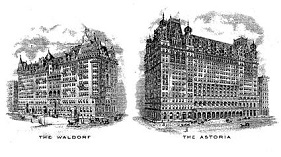
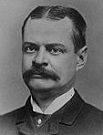
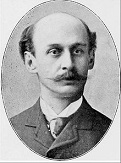
On Mar. 13, 1893 William Waldorf "Willy" Astor, 1st Viscount Astor (1848-1919) opens the 225-ft. 13-story 450-room Waldorf Hotel at 5th Ave. and 33rd St. in New York City next door to a house owned by Willy's aunt Caroline Webster Schermerhorn Astor (1830-1908) on the future site of the Empire State Bldg., connected by Peacock Alley, becoming the world's largest hotel (until 1963), transforming the concept of a facility for transients into a prestigious destination for visitors, which shocks Victorian society by admitting single women; the architect is Henry Janeway Hardenbergh (1847-1918) of Willard Hotel fame; pince-nez-wearing Prussian-born George Charles Boldt (1851-1916), owner of the Bellevue-Stratford Hotel in Philly becomes the proprietor, popularizing Thousand Island dressing and Waldorf Salad; after initially being called "Astor's (Boldt's) Folly", a benefit concret for St. Mary's Hospital for Children on opening day attended by the elite paying $5 each causes it to become a success, earning $4.5M the first year; in 1931 a new 47-story Art Deco bldg. opens at 301 Park Ave. - visiting blue bloods have a home?
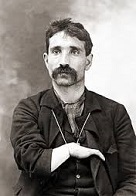
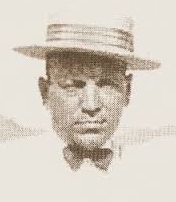
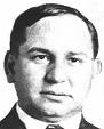
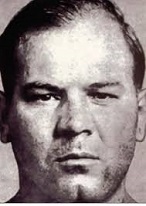
In 1894 Sicilian-born Giuseppe "the Old Fox" Morello (1867-1930), known as "Clutch Hand" for his deformed 1-finger right hand emigrates to New York City, founding the Morello crime family (AKA the 107th Street Mob) based in Italian Harlem in East Harlem, Lower East Side, Manhattan, N.Y., becoming known for barrel murders and going on to defeat the rival Neapolitan Camorra in Brooklyn and become New York City's first capo di tutti capi (boss of bosses); in 1909 he is imprisoned in Atlanta Federal Penitentiary for counterfeiting, and in 1910 his captain, Silician-born Salvatore "Toto" D'Aquila (1873-1928) leaves the Morello crime family and forms his own, eventually becoming the new boss of bosses, operating from East Harlem and the Bronx and expanding into Brooklyn and Little Italy in Lower East Side, Manhattan, ordering Morello murdered after his 1920 release and return to New York City, causing him to join up with Sicilian-born Giuseppe "Joe the Boss" Masseria (1886-1931) ("the man who can dodge bullets") as his consiglieri (war chief), while Masseria survives assassination attempts by D'Aquila's Sicilian-born hitman Umberto "the Ghost" Valenti (1891-1922) on May 8, May 10, and Aug. 9, 1922 until he is ambushed and killed by Lucky Luciano and Morello on Aug. 11, 1922, after which D'Aquila struggles, losing associates Saverio "Sam" Pollacia (defects to Masseria), Joseph Lonardo (-1927) (murdered on Oct. 13, 1927), and Frankie Yale (-1928) (murdered in July 1928), moving to the Bronx across from the Bronx Zoo in 1925 and hanging on until his Oct. 10, 1928 assassination in Manhattan, after which his underboss Alfred Manfredi "Al" Mineo (1880-1930) becomes boss of the D'Aquila crime family, which later becomes the Gambino crime family; meanwhile Morello flourishes until the Castellammarese War starts in 1929, after which he is murdered on Aug. 15, 1930 by "Buster from Chicago" (Sebastiano Domingo), according to informer Joseph Valachi (it was really him?).
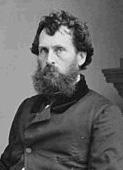
In 1895 after trustee John Bigelow (1817-1911) (U.S. ambassador to France during the U.S. Civil War) comes up with the idea, the Tilden Trust creates the New York Public Library by joining the struggling Astor and Lenox libraries, opening their collections to the public; in Feb. 1901 it absorbs the New York Free Circulating Library; Andrew Carnegie donates $2.5M to build 65 branch libraries.

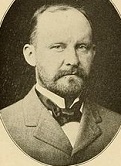
On Apr. 27, 1897 after Mrs. Grant overrules those who want it to be placed in Washington, D.C., the 150-ft. domed granite General Grant Nat. Monument (Grant's Tomb) (a clone of the Greek Mausoleum of Halicarnassus) at in Riverside Park at Riverside Dr. and W. 122nd St. in Upper Manhattan, N.Y. across from Riverside Church opens, going on to house the sarcophagi of Grant and his wife surrounded by busts of Union Army leaders; after a competition, it was designed by Am. architect John Hemenway Duncan (1854-1929), causing his fame to skyrocket, going on to design the Soldiers' and Sailors' Memorial Arch in the Grand Army Plaza in Brooklyn, N.Y. AKA Brooklyn's Arc de Triomphe.

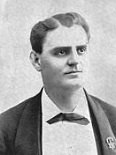

On Nov. 1, 1897 after his mother Caroline Webster Schermerhorn Astor (1830-1908) moves uptown, future Titanic victim John Jacob "Jack" Astor IV (1864-1912) opens the 17-story Astoria Hotel next to the Waldorf Hotel, designed to be connected through Peacock Alley, going on to become known as the Waldorf-Astoria Hotel, becoming the first hotel with electricity and private bathrooms, and the motto "The guest is always right", becoming a favorite with the wealthy upper crust incl. Andrew Carnegie; the first maitre d'hotel is Swiss-born Oscar Tschirky (1866-1950) (until 1943), who becomes known as "Oscar of the Waldorf", inventing Waldorf Salad and Eggs Benedict, and popularizing Thousand Island dressing along with pub. a popular 900-page cookbook titled "The Cookbook by Oscar of the Waldorf" in 1896, followed in 1902 by the booklet "Serving a Course Dinner"; Tschirky is later eulogized by James Remington McCarthy as an artist who "composed sonatas in soups, symphonies in salads, minuets in sauces, lyrics in entrees".
In 1897 the Brooklyn Museum of Art is founded in Brooklyn, N.Y., and housed in a 500K-sq.-ft. Beaux Arts bldg., becoming the 2nd largest art museum in the New York City area.
In 1897 the bldgs. on Ellis Island in New York Harbor burn down, causing 28 new ones to be constructed, followed in 1898 and 1905 by two additional artificial islands created by dumping earth and rock, and joined by causeways, increasing the area from 3 to 27.5 acres.
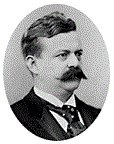
On Jan. 1, 1898 the consolidation and incorporation of the City of Greater New York, at the mouth of the Hudson (North) River occurs with the merger of Brooklyn and Manhattan; the city's five boroughs Manhattan (New York County), the Bronx (Bronx County), Brooklyn (Kings County), Queens (Queens County) and Richmond (Richmond County, Staten Island) have 3.4M pop. total; next year the three eastern towns of Queens County separate to form Nassau County; meanwhile on Jan. 1 New York City-born Dem. judge (Tammany Hall puppet) Robert Anderson Van Wyck (1849-1918) becomes New York City mayor #91 (until Dec. 31, 1901).
In 1898 the Great Manure Crisis of 1898 sees horse manure accumulate in the streets of large Western cities incl. New York City, London, and Sydney, causing the 3-day First Internat. Urban Planning Conference to be convened in New York City but fail to find a solution; luckily the horse-drawn carriage solves it for them, with U.S. car sales zooming from 4,192 in 1900 to 356K in 1912; in 1917 the last horse-drawn streetcar in New York City is retired.
In 1899 New York City still has no sewage system or running water; diarrhea claims 75% of all children under age five; the 3M+ pop. is bunched below 57th St. or along the border of Brooklyn; the 30-story 15 Park Row Bldg. becomes the world's tallest bldg. (until 1908); the Bronx Zoo and Brooklyn Children's Museum in Crown Heights open; the Boulevard becomes Broadway above 59th St.; the city has 43 newspapers, 23 in English; 100K-200K horses live in the city, with a lifespan of 2.5 years, and when they drop dead they must be allowed to decompose before they can be carted away in hunks - the whole city stinks like what?

On Sept. 13, 1899 real estate salesman Henry Hale Bliss (b. 1830) becomes the first person in the U.S. to be killed in an automobile accident in the U.S. when he is hit by a cab in New York City after leaving a streetcar at W. 74th St. and Central Park West, and dies the next morning; taxi driver Arthur Smith is tried for manslaughter and acquitted; his passenger Dr. David Edson is the son of former New York City mayor Franklin Edson; on Sept. 13, 1999 a plaque is dedicated on the site.
Early in the 1900s Sicilian Mafia members begin emigrating to the U.S. (esp. New York City and Buffalo), bringing their Old World code with them and ending up being called Musatache Petes by the Young Turks incl. Vito Genovese and Lucky Luciano after getting pissed-off at their refusal to allow non-Sicilians incl. Italians, Jews, and Irish into the mob, and their refusal to expand their victims to the non-Italian pop.


In 1901 after Mark Twain campaigns for him, anti-Tammany Hall Repub. Colombia U. pres. #11 (since 1890) (Teddy Roosevelt lookalike?) Seth Low (1850-1916) is elected New York City mayor #92, taking office on Jan. 1 (until Dec. 31, 1903) on the Fusion Party reform ticket, going on to establish a merit-based civil service system, reduce police graft, improve public education, and lower taxes, which doesn't stop the Tammany Hall machine from plotting to replace him with their puppet; Columbia-educated philosophy prof. Nicholas Murray Butler (1862-1947) becomes pres. #12 of Columbia U. (until 1945), steering it away from vocational training while becoming a leading peacenik and trying in vain to limit Jewish admissions.
In 1901 9-y.-o. Vito Andolini (1891-1955) flees from Corleone, Sicily to New York City after his parents and older brother are killed by Mafia boss Don Ciccio, going on to make it big in organized crime under the name Don Vito Corleone and make a quick trip back in 1925 to get revenge - Mario Puzo's The Godfather (1969) :)

In 1902 the 181-room Algonquin Hotel at 59 West 44th St. in Manhattan, N.Y. opens, becoming the home of the Alonquin Round Table in 1919-29.


In 1902 Am. architect Daniel Hudson Burnham (1846-1912) designs the triangular Flatiron Bldg. in New York City (at 23rd St., 5th Ave. and Broadway), as well as the Union Station in Washington, D.C. (finished 1907); the Flatiron Bldg. acts as a wind tunnel, creating updrafts and viewing opportunities for men.

On Oct. 27, 1904 the Interborough Rapid Transit (IRT), the first rapid transit subway is inaugurated in New York City by new Princeton-educated mayor #93 (Jan. 1, 1904-Dec. 31, 1909) George Brinton McClellan Jr. (1865-1940), son of inept Civil War Union gen. George B. McClellan Sr.; it goes from City Hall to W. 145th St. in 26 min., and tickets cost a nickel (no tokens until 1953).
On Dec. 31, 1904 (midnight) One Times Square (originally Longacre Square), built for The New York Times publisher Adolph S. Ochs celebrates its opening with New Year's Eve fireworks at the 24-story Times Tower before a crowd of 200K after a giant ball made from wood and iron outfitted with 100 25-watt lightbulbs is lowered from the 70-ft. flagpole at the top, starting a tradition; actually, it opened on Apr. 8, but it took 6 mo. for the subway terminal to open.
In 1904-8 the North River Tunnels under the Hudson River are built, connecting Penn. Station in Manhattan, N.Y. with Weehawken, N.J., opening for passenger service in 1910 and carrying 20% of all U.S. commerce by 2020; too bad, they become a ticking time bomb after failing to be renewed?; watch video.


On Dec. 31, 1909 the 1,470-ft. (448m) suspension Manhattan Bridge in New York City over the East River between Canal St. in Manhattan and downtown Brooklyn (begun 1901) opens to traffic, becoming the first suspension bridge to employ the deflection theory of Josef Melan for the deck, and the first to utilize a Warren Truss, becoming a forerunner of modern suspension bridges, designed by Latvian-born bridge engineer Leon Solomon Moisseiff (1872-1943).
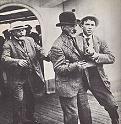
On Jan. 1, 1910 honest former N.Y. supreme court justice (1893-9) William Jay Gaynor (1849-1913) (who started out a devout Roman Catholic then left the Church after reading Benjamin Franklin's autobiography) becomes New York City mayor #94 (until Sept. 10, 1913), becoming known for refusing to take orders from Tammany Hall boss Charles Francis Murphy, with his reforms causing an assassination attempt on Aug. 9 by fired dock night watchman James J. Gallagher (-1913) aboard the SS Kaiser Wilhelm der Grosse while docked in Hoboken, N.Y., with New York World photographer William Warnecke taking a photo of the moment when he shoots a bullet through his neck, becoming the only New York City to be hit by a bullet during an assassination attempt; the bullet lodges in his neck, leading to his early death.
On Sept. 8, 1910 Pennsylvania Station in New York City opens for Long Island Rail Road trains via the new tunnel under the East River; on Nov. 27 Penn. Railroad trains begin using it, eventually replacing the old New York City area terminal across the Hudson River at Exchange Place in Jersey City, N.J.
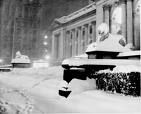
On May 23, 1911 the $8M Renaissance-style New York Public Library bldg. at Fifth Ave. and W. 42nd St. in New York City opens, complete with two stone lions flanking the front steps; the architectural firm of John Merven Carrere (1858-1911) and Thomas Hastings (1860-1929) won a nat. competition to build it.


In 1913 George Loane Tucker's Traffic in Souls (Universal Studios) debuts, about white slavery, filmed on location in Manhattan and Ellis Island, starring Walter Long, shocking the U.S. and resulting in white slavery being added to the list of banned topics under the Hays Code, making Chicago, Ill.-born dir. George Loane Tucker (1880-1921) into the "first of the immortals".


In 1913 the Apollo Theater at 253 W. 125th St. in Harlem, N.Y. opens for African-Am. performers. In 1913 the Neo-Gothic Episcopal Church of the Intercession in New York City at 155th St. and Broadway on Sugar Hill between Harlem and Washington Heights, designed by Bertram Grosvenor Goodhue (1869-1924) is built, becoming the unofficial HQ for visiting African prelates incl. Archbishop Desmond Tutu of South Africa.
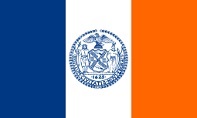
On Apr. 6, 1915 New York city adopts a flag, a vertical tricolor in blue, white and orange with the New York City Seal in the center bar in blue, derived from the Prince's Flag of the Dutch Repub. used in New Amsterdam in 1625 and going back to Prince William of Orange in 1577.
On June 17, 1916 the New York City Polio Epidemic begins, infecting 27K and killing 2K mostly in Brooklyn, plus 4K in other parts of the U.S.
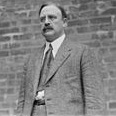
On Jan. 1, 1918 Dem. Tammany Hall candidate John Francis Hylan (1868-1936) (former railroad engineer) becomes New York City mayor #96 (until Dec. 31, 1924), fighting to keep subway rates at 5 cents and launching the Independent Subway System, giving a famous speech against "the interests" in 1922, with the soundbyte: "The real menace of our Republic is the invisible government, which like a giant octopus sprawls its slimy legs over our cities, states and nation. To depart from mere generalizations, let me say that at the head of this octopus are the Rockefeller–Standard Oil interests and a small group of powerful banking houses generally referred to as the international bankers. The little coterie of powerful international bankers virtually run the United States government for their own selfish purposes. They practically control both parties, write political platforms, make catspaws of party leaders, use the leading men of private organizations, and resort to every device to place in nomination for high public office only such candidates as will be amenable to the dictates of corrupt big business. These international bankers and Rockefeller–Standard Oil interests control the majority of the newspapers and magazines in this country. They use the columns of these papers to club into submission or drive out of office public officials who refuse to do the bidding of the powerful corrupt cliques which compose the invisible government. It operates under cover of a self-created screen [and] seizes our executive officers, legislative bodies, schools, courts, newspapers and every agency created for the public protection"; the Dan Quayle of his day, with a rep for missing some cylinders (banker agitprop?), his successor Jimmy Walker appoints him judge of the Queens Children Court, with the soundbyte: "The children can now be tried by their peer."
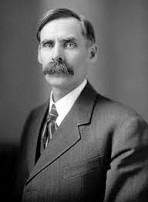

On Oct. 10, 1919 the U.S. Senate and House pass the U.S. Volstead Nat. Prohibition Enforcement Act, drafted by U.S. Rep. (R-Minn.) (1903-23) Andrew Volstead (1860-1947), chmn. of the House Judiciary Committee, with advice from Anti-Saloon League pres. Wayne Bidwell Wheeler (1869-1927); on Oct. 27 Pres. Wilson vetos it, and the same day it is overridden by the House, followed on Oct. 28 by the Senate, and the Volstead Act becomes law; Prohibition begins, with Wheeler running the federal bureau from the outside without official authority, becoming the most powerful person in the U.S. - drink fast?
The American Irish become Mister Feelgood? By the 1920s the Irish have "arrived" in the U.S., and could probably run it if they just weren't !?!? Roman Catholic?; "There are judges by the dozen, incl. a third of the Supreme Court, three Cardinals, Senators, multi-millionaires and captains of industry by the score, like Mr. Henry Ford, the motor king, Mr. Doheny, who dominates the petrol industry, Mr. Thomas F. Ryan, the partner of King Leopold in the Congo diamond mines, Mr. Mellon, the secy. to the Treasury, Mr. Doughtery, the Atty.-Gen., Mr. Smith, the gov. of New York, Mr. Hylan, the mayor of New York, Mr. Tumulty, private secy. to Pres. Wilson, Gen. O'Ryan of the American Army, Dudly Malone, chief official of the port of New York, J.R. Ryan, the head of the Copper Trail, John Mitchel, mayor of New York, Col. Concanon, chmn. of the White Star Line, and J.A. Farrell, Pres. of the U.S. Steel Co." (Terence Sheehy) - we've been ratted out, boys?






In the 1920s (1918-29?) the Harlem Renaissance (New Negro Movement) of African-Am. writers in Harlem, Manhattan, N.Y. begins, led by Alain LeRoy Locke (1886-1954) (the Dean) (first African-Am. Rhodes scholar, 1907), James Mercer Langston Hughes (1902-67), Arna Wendell "Arna" Bontemps (1902-73), Countee Cullen (1903-46), Jessie Redmon Fauset (1882-1961), Alice Ruth Moore Dunbar Nelson (1875-1935) et al. In 1928 Countee Cullen marries the daughter of W.E.B. Du Bois.
On Jan. 16, 1920 Prohibition 18th Amendment to the U.S. Constitution, making the manufacture, sale, and transportation (but not consumption or private possession) of alcoholic beverages a federal crime, causing bootlegging to skyrocket; it is not repealed until Dec. 5, 1933 with the ratification of the 21st Amendment to the U.S. Constitution; Canadian breweries use the opportunity to being producing Am.-style Cream ale, which after Prohibition ends becomes popular in both countries; meanwhile in the 1920s brewers try to stay in business by producing near bears, incl. Pablo (Pabst), Famo (Schlitz), Vivo (Miller), Lux-O (Stroh), and Bevo (Anheuser-Busch), producing 300M gal. in 1921 and 88M gal. in 1932.

On Mar. 6, 1921 N.Y. passes a movie censorship law, causing William Aloysius Brady (1863-1950), pres. of the Nat. Assoc. of the Motion Picture Industry (1915-22) to go on a U.S. tour to protest movie censorship, causing the industry to turn to self-censorship next year to forestall govt. intervention.
In 1921 Abraham Lincoln H.S. in Brooklyn, N.Y. is founded, going on to graduate a host of STEM royalty incl. three Nobel prize laureates, Paul Berg, Jerome Karle, and Arthur Kornberg, plus a host of entertainment celebs incl. Marv Albert, John Forsythe, Louis Gossett Jr., Harvey Keitel, Arthur Miller, Buddy Rich, and Neil Sedaka.


On Feb. 13, 1923 taking his cue from the Commonwealth Big Five, the New York Renaissance (Rens) (Big Five), the first black-owned prof. African-Am. basketball team is founded in Harlem, N.Y. by Saint Kitts, West Indies-born Robert L. "Bob" Douglas (1882-1979), who becomes known as "the Father of Black Professional Basketball"; on Nov. 3 they play their first game, against an all-white team; on Dec. 20, 1925 they defeat the Original Celtics for the world prof. basketball title; in 1929 6'4" center Charles "Tarzan" Cooper (1907-80) joins (until 1941), becoming basketball's first Wilt Chamberlain, with Original Celtics center Joe Lapchick calling him the greatest center who ever played; in 1932-33 they go 120-8, incl. a record 88 consecutive wins; in 1939 they defeat the Oshkosh All-Stars by 34-25 in Chicago, Ill. to win the world prof. basketball title; on Feb. 5, 1972 Douglas becomes the first African-Am. elected to the Basketball Hall of Fame.

In 1923 the Cotton Club night club in Harlem, N.Y. at 142nd St. and Lenox Ave. opens (until 1935) as a whites-only establishment featuring mainly black entertainers, incl. Louis Armstrong, Count Basie, Cab Calloway, Duke Ellington, Billie Holiday, Lena Horne, Fats Waller, Ethel Waters, the Nicholas Brothers, and Stepin Fetchit; Sun. nights are Celebrity Night, with guests incl. Fanny Brice, Eddie Cantor, Jimmy Durante, Judy Garland, George Gershwin, Moss Hart, Langston Hughes, Al Jolson, NYC Mayor Jimmy Walker et al.; in 1936-40 it reopens in the midtown Theater District.
On June 10-12, 1924 the 1924 Repub. Nat. Convention in Cleveland, Ohio nominates Calvin Coolidge of Mass. for pres., and Charles Gates Dawes of Ill. (of Dawes Plan fame) for vice-pres.; the campaign ads feature an electric fan and the slogan "Keep Cool With Cal".


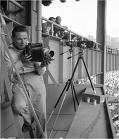

On June 24, 1924 the tabloid New York Daily Mirror is founded by William Randolph Hearst (1863-1951) to compete with the #1-in-the-U.S. New York Daily News, attracting top talent incl. Ringgold Wilmer "Ring" Lardner Jr. (1915-2000), sports photographer Hy Peskin (1915-2005) (who helps make the Brooklyn Dodgers famous), and liberal Jewish-Am. former vaudeville performer Walter Winchell (1897-1972), whose gossip column "On Broadway" ends up being syndicated in 2K papers worldwide and read by 50M a day until the early 1960s; in 1930 Winchell begins Sun. night radio broadcasts, ending up on NBC's Blue Network and reaching another 20M to the late 1950s, opening with "Good morning, Mrs. and Mrs. North and South America and all the ships at sea, let's go to press", then delivering his lines at jet speed; Hearst ends up with a string of 28 newspapers, selling the Mirror in 1928, then buying it back in 1932; too bad, despite being #2 in the U.S. in circulation, it folds on Oct. 16, 1963 after the 114-day 1962 New York City newspaper strike. On June 24-July 9 the 1924 Dem. National Convention is held in New York's Madison Square Garden, becoming known as the "Klan Bake" for its large number of delegates who are members of or friends of the KKK, defeating a platform plank condemning the KKK, causing 10K hooded Klansmen to hold a rally across the Hudson River in N.J.; Lena Springs (Mrs. Leroy Springs) (-1942) is the first woman considered for the job of vice-pres.; on July 11 after 103 roll-calls the Dems. bypass N.Y. gov. Alfred E. Smith and William G. McAdoo of Calif., and nominate famous constitutional lawyer John William Davis (1873-1955) of W. Va. and Charles Wayland Bryan (1867-1945) (younger brother of William Jennings Bryan) to run against Calvin Coolidge.





On Feb. 21, 1925 the first issue of The New Yorker mag., founded by Colo.-born h.s. dropout Harold Wallace Ross (1892-1951) (ed.-in-chief until his death), and Austrian-born banker Raoul Herbert Fleischmann (1885-1969), cousin of yeast king Julius Fleischmann is pub., becoming the #1 lit. mag. in the U.S.; "It is not edited for the old lady in Dubuque"; the top-hatted character Eustace Tilley, created by a Victorian era-loving Rea Irvin (1881-1972) appears on the cover of the first issue and every anniv. issue thereafter; Irvin also creates the mag.'s typeface; E.B. White (1899-1985) becomes a main contributor, keeping it up for life, as does cartoonist Peter Arno (1904-68) and correspondent Janet Flanner (1892-1978), who uses the penname Genet.
On Jan. 1, 1926 Irish-Am. Dem. Greenwich Village alderman and Tin Pan Alley songwriter James John "Jimmy" "Beau James" Walker (1881-1946) becomes mayor of New York City (until Sept. 1, 1932), becoming known as Beau James as he makes the Big Apple friendly to the Jazz Age by allowing speakeasies to proliferate while he enjoys chorus girls, leaving his wife for Isle of Wight-born Ziegeld Follies showgirl Betty (Violet Halling) Compton (1904-44), whom he marries in 1933; too bad, the Great Depression gives Cardinal Patrick Hayes an excuse to come down on his case, blaming his immorality for everything, leading to corruption investigations, after which he resigns on Sept. 1, 1932 and skips to Europe for awhile to avoid prosecution and marry his Betty; after the heat dies down, he returns and becomes pres. of Majestic Records.
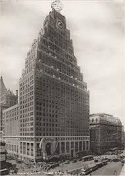
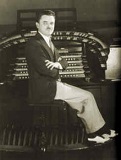
On Nov. 19, 1926 the Paramount Theatre (cap. 3,664) at 1501 Broadway in Manhattan, N.Y. in the Times Square district opens as the HQ of Paramount Pictures, with founder Adolph Zukor maintaining his office there until 1976; the opening features the stage show "God Gave Me 20 Cents", featuring Mayor Jimmy Walker and Thomas Edison; the theater houses a large Wurlitzer organ for silent films, featuring organist ("Poet of the Organ") Jesse Crawford (1895-1962) until 1933.
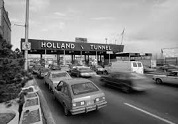
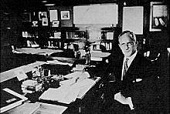
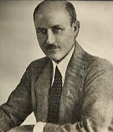
On Nov. 13, 1927 the 1.7-mi. (8,558 ft.) (2,608.5m) Holland Tunnel for vehicular traffic from Manhattan, N.Y. to Jersey City, N.J. under the Hudson River opens, named after chief engineer Clifford Milburn Holland (1883-1924), who died of overwork during its construction, after which designed by Norwegian-born civil engineer Ole Knutsen Singstad (1882-1969) finishes it, adding an innovating ventilation system, and later inventing the sunk-tube method of underwater vehicular tunnel building using prefab sections.




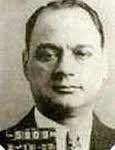




In Feb. 1930 the Castellammarese War in New York City (ends Apr. 15, 1931) begins between the gangs of Sicilian-born Giuseppe "Joe the Boss" Masseria (1886-1931) and Castellamare del Golfo, Sicily-born Salvatore Maranzano (1886-1931). On Nov. 5 Joe Masseria ally Alfred Manfredi "Al" Mineo (b. 1880) is murdered in the garden of his apt. bldg. on Pelham Pkwy. in Bronx, N.Y., after which Francesco "Frank" "Don Ciccio" "Wacky" Scalice (1893-1957) becomes head of his crime family, switching allegiance to Maranzano until his Sept. 10, 1931 murder, when he is forced by Lucky Luciano to resign in favor of Vincent "Vince the Executioner" Mangano (Vincenzo Giovanni Mangano) (1888-1951) (until 1951). On Apr. 15, 1931 the Castellammarese War (begun Feb. 1930) ends with the murder of Sicilian-born crime boss (capo di capi) Giuseppe "Joe the Boss" Masseria (b. 1886) in a Coney Island restaurant, ending the Castellammarese War (begun Feb. 1930); two weeks later Sicilian-born Salvatore "Sal" "Mustache Pete" "Little Caesar" Maranzano (b. 1868) convenes a meeting of several hundred Mafiosi in Upstate N.Y. and promotes himself to boss of bosses (capo di tutti capi), with a grandiose plan for a Mafia Commission and an org. of the New York Mafia into Five Families; he then meets with Al Capone and other non-New York mob bosses in Wappingers Falls, N.Y.; too bad, his insistence on modelling his org. after the ancient Roman Empire and comparing himself to Caesar backfires, and on Sept. 10 after being found out planning the murder of Lucky Luciano et al. he is murdered in his Manhattan office by Luciano's gangsters claiming to be IRS agents; on Oct. 17 Chicago mob boss Alphonse "Al" "Scarface" Capone (1899-1947) (who appeared on the cover of the Mar. 24, 1930 issue of Time mag.) is convicted, and on Oct. 24 is sentenced to a then-unprecedented 11 years in prison for federal income tax evasion on an estimated annual income of $20M, and housed in Alcatraz from Aug. 1934 to Nov. 1939, leaving Charles "Lucky" Luciano (1897-1962) and Joseph (Giuseppe) "Joe Bananas" Bonanno (1905-2002) in charge, who reorganize the Five Families and abolish the position of boss of bosses; meanwhile "Untouchable" G-man Eliot Ness (1903-57) gets a promotion - keep your hands off my dingaling?
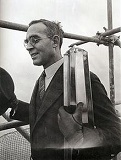


On May 27, 1930 the 77-story 1,046-ft. (318.9m) Chrysler Bldg. at 405 Lexington Ave. (42nd St. and Lexington Ave.) in New York City is completed, designed by Brooklyn, N.Y.-born architect William van Alen (1883-1954), becoming a prime example of plush art deco, right down to the elevator doors, and is one of the first skyscrapers to carry stainless steel on its exterior, becoming the tallest brick bldg. on Earth, the tallest bldg. in the world until 1931, after which it becomes the 2nd talles until 2007.
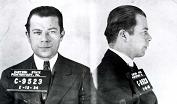
In June 1930 Brooklyn, N.Y.-born bank robber William "Slick Willie" Sutton (1901-80) (prefers the name Bill) is captured and given a 30-year sentence, but escapes on Dec. 11, 1932, going on to rob a total of 100 banks before his Feb. 1952 capture.

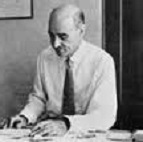
On May 1, 1931 the 1,472-ft.-tall (1,250 ft. tall) Empire State Bldg. at 350 Fifth Ave. in New York City opens, designed by Brooklyn, N.Y.-born architect William Frederick Lamb (1893-1952), becoming the world's tallest bldg. (Eiffel Tower = 984.5 ft.); the stairway has 1,576 steps; it has 60K tons of steel beams, 3M sq. ft. of wire mesh, 70K cubic yards of concrete, 10M bricks, 5 acres of windows, and 2M sq. ft. of office space, which can accommodate 15K people; the upper 30 stories are lit with hi-intensity floodlights visible for 50 mi., which are turned off in the spring and fall to prevent migrating birds from flying into it.
On Oct. 12, 1931 the New York Times Best Seller List begins pub. in The New York Times (until ?), listing books from New York City only; on Apr. 9, 1942 the list goes national.

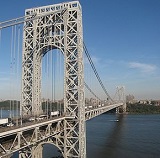
On Oct. 24, 1931 N.Y. gov. Franklin D. Roosevelt dedicates the George Washington Bridge (begun Oct. 1927), designed by Swiss-born civil engineer Othmar Hermann Ammann (1879-1965), spanning the Hudson River between W. 178th St. in Manhattan and Ft. Lee, N.J., becoming the world's longest suspension bridge (until ?), carrying up to 100M vehicles/year; its two support towers rise 604 ft. above the water, and the bridge is supported on four 36-in. diam. cables; thrifty Swiss Ammann brings the bridge in ahead of schedule and under budget, and goes on to design the Bayonne Bridge (opened Nov. 15, 1931), Triborough Bridge (opened July 11, 1936), and Bronx-Whitestone Bridge (opened Apr. 29, 1939).

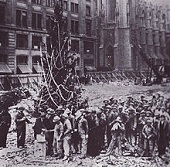

In 1931 after Columbia U. leases the land to John D. Rockefeller Jr. in 1928, the 14-bldg. Art Deco Rockefeller Center in Midtown Manhattan, N.Y. between 48th and 51st Sts. facing Fifth Ave. is begun, employing 40K-60K workers, becoming the largest private bldg. project in modern times (until ?), and "the only large private permanent construction project planned and executed between the start of the Depression and the end of the Second World War" (Carol Herselle Krinsky); the final rivet is installed by John D. Rockefeller Jr. on Nov. 1, 1939; in Feb. 1947 the unfinished Esso Bldg. at the N end becomes part of the center; five Internat. Style bldgs. are later built on the W side of Sixth Ave. and at the N end of Rockefeller Plaza, which incl. Radio City, 30 Rockefeller Plaza, and an ice-skating rink; Colonial Sand and Stone, founded by Italian-born Generoso Pope (Papa) (1891-1950) provides the you know what for this along with Radio City Music Hall, the Empire State Bldg., the George Washington Bridge, and the original Yankee Stadium. In Nov. 1931 the first Rockefeller Center Christmas Tree is erected by workers in front of the unfinished Rockefeller Center in Midtown Manhattan, N.Y., only 20 ft. tall; in 1933 the first official tree is 50 ft. tall; starting in 1997 the lighting is broadcast live on NBC-TV on the first Wed. after Thanksgiving, with the New York City mayor doing the honors; the tree is donated, and is usually a Norway spruce 69-100 ft. (21m-30m) tall; it is taken down in early Jan.
In 1931 the (Mafia) Commission is founded to replace the Boss of All Bosses (Capi di Tutti Capi) by the Five Families of New York City (Bonanno, Colombo, Gambino, Genovese, Lucchese), the boss of the Chicago Outfit, and the boss of the Buffalo Family; it holds its last meeting in Nov. 1985.


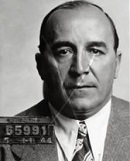
23 skidoo? On Feb. 8, 1932 bootlegger Dutch Schultz and/or Hell's Kitchen Irish Mob boss Owney Madden have 23-y.-o. Irish-born mob assassin Vincent "Mad Dog" Coll (b. 1908) (known for accidentially shooting 5-y.-o. Michael Vengali on July 28, 1931, causing the mayor of New York City to give him his name, and making him a wanted fugitive until he was captured, tried, and acquitted in Dec. 1931) murdered at a phone booth at 8th Ave. and 23rd St. in New York City. On Oct. 23, 1935 (10:15 p.m.) after attempting to kill prosecutor Thomas Dewey sans orders from the Mafia Commission, bootlegger-racketeer Dutch Schultz (Arthur Simon Flegenheimer) (b. 1902), the Beer Baron of the Bronx is fatally shot with rusty bullets at the Palace Chop House in Newark, N.J. by Charlie Workman, who serves 23 years of a life sentence before being paroled; Schultz dies 22 hours later of peritonitis; the Genovese crime family takes over his numbers racket in Harlem, N.Y., and his close associate Joseph "Tough Joey" Rao (1901-62) AKA Joseph Cangro joins-up.
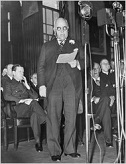
In early Nov. 1932 after the surprise resignation of Jimmy Walker, Tammany Hall's candidate John Patrick O'Brien (1873-1951) beats acting mayor Joseph V. Mckee by 500K votes, and on Jan. 1 he is sworn-in as mayor #98 of New York City (until Dec. 31, 1933), uttering the soundbyte about who will be the next police commissioner "I don't know. They haven't told me yet."


In early Nov. 1933 5'2" Greenwich Village, N.Y.-born Fiorello (It. "Little Flower") Henry (Enrico) La Guardia (1882-1947) beats Tammany Hall to become mayor New York City, and is sworn-in as mayor #99 on Jan. 1 (until Dec. 31, 1945), going on to become "the Napoleon of New York", using his first 100 days in office to end corruption, replace patronage with merit-based civil service, modernize transportation and parks with the help of New Haven, Conn.-born Yale U., Columbia U., and Oxford U. grad Robert Moses (1888-1981), and restore the city's financial health and end dependence on banks; a Repub. who supports Dem. U.S. pres. Franklin D. Roosevelt, he is given 20% of the entire nat. U.S. Civil Works Admin. (CWA) budget for work relief; he names the lions in front of the N.Y. Public Library "Patience" and "Fortitude".
On Dec. 5, 1933 Mormon-dominated Utah becomes the 36th state to ratify the Twenty-First (21st) (XXI) Amendment to the U.S. Constitution, repealing the 18th Amendment and ending Prohibition (begun Jan. 16, 1920), and the U.S. goes wet, freeing the whole country from being a concentration camp for alcoholics (into being a concentration camp for drivers?); too bad, Prohibition reduces the number of U.S. breweries from 1100 in 1920 to 300 in 1933, which are whittled down to 50 by 1982.
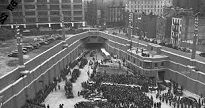

On Dec. 22, 1937 the center tube of the 1.5-mi. (8,216 ft.) (2,504m) Lincoln Tunnel (named after Pres. Abraham Lincoln) for vehicular traffic between midtown Manhattan, N.Y. and Weehawken, N.J. under the Hudson River opens, designed by Norwegian-born civil engineer Ole Knutsen Singstad (1882-1969), becoming the 2nd major tunnel between the two states along with the Holland Tunnel; originally named the Weehawken Midtown Tunnel, the George Washington Bridge to the N causes the name change to keep up with the Georges?; the north tube opens on Feb. 1, 1945, and the south tube on May 25, 1957.

In 1937 the first illegal heroin labs in Marseille, France are set up by Corsican gang leader Paul Bonnaventure Carbone (1894-1943), whose network starts out with morphine paste from Turkey, and evolves after WWII into the French Connection, smuggling heroin from Turkey to France then the U.S., peaking in the late 1960s and supplying the majority of U.S. heroin until it it shut down in 1972. In 1969 <Robin Moore (1925-2008) pub. The French Connection: A True Account of Cops, Narcotics, and International Conspiracy. On Oct. 9, 1971 William Friedkin's The French Connection, based on the 1969 true story book by Robin Moore debuts, starring Eugene Allen "Gene" Hackman (1930-) as porkpie-hat-wearing New York City detective Jimmy "Popeye" Doyle (based on real-life New York City detective Eddie Egan), and Roy Scheider as his partner Buddy Russo, who break a Marseille heroin ring run by Alain Charnier (Fernando Rey) by stripping down his brown 2-door Lincoln Continental mule car (license plate 18 LU 13); French TV performer Jacques Angelvin plays the cop-killing courier; features one of the best car chase scenes in Hollywood history; #4 grossing film of 1971 ($41.1M); "I'm going to nail you for picking your feet in Poughkeepsie" (Doyle); "I'd sooner be a lamp post in New York than the president of France" (Doyle). On Feb. 29, 1972 the French Connection of heroin smuggling from Marseille, France to New York City begins to be dismantled as French authorities seize the shrimp boat Caprice des Temps carrying 915 lb. (415kg) of heroin; drug arrests in France skyrocket from 57 in 1970 to 3,016 this year; too bad, they corrupt the New York City Police Dept., who substitute confiscated heroin with flour and cornstarch until insects are discovered eating it.
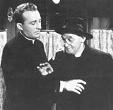
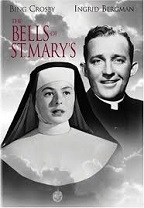
On May 3, 1944 Leo McCarey's B&W Going My Way (Paramount Pictures) debuts, based on a story by McCarey, starring Bing Crosby as singing priest Father Charles Francis Patrick "Chuck" O'Malley of St. Dominic's in New York City, for which he wins a best actor Oscar, with Bob Hope saying that any man with four kids who can play a priest deserves to win; Barry Fitzgerald plays Father Fitzgibbon; the film is nominated for nine Oscars, and wins seven; highest-grossing film of 1944 and the decade; after WWII Crosby and McCarey present a copy of the film to Pope Pius XII at the Vatican; features the song Swinging on a Star by Johnny Burke and Jimmy Van Heusen. On Dec. 6, 1945 Leo McCarey's The Bells of St. Mary's (RKO Radio Pictures) debuts, starring Bing Crosby reprising his role as Father O'Malley, and Ingrid Bergman as Sister Mary Benedict, who engage in friendly non-sexual rivalry to build up a big city Roman Catholic school; does $8M box office on a $1.3M budget (#1 grossing film of 1945); Michael Corleone and his wife Kay are watching it when the rival Tattaglia mob hits his daddy Don Vito "the Godfather" Corleone.
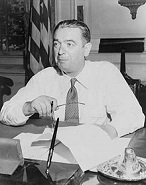
On Jan. 1, 1946 County Mayo, Ireland-born Dem. William O'Dwyer (1890-1964), Tammany Hall's candidate becomes New York City mayor #100 (until Aug. 31, 1950), singing "It's a Great Day for the Irish" at his inauguration, going on to establish the Office of City Construction Coordinator, with Robert Moses as park commissioner #1, and preside over the first $1B city budget, creating a traffic dept. and raising subway fares from 5 cents to 10 cents; too bad, he resigns after a police corruption scandal, receiving a ticker tape parade and getting appointed U.S. ambassador to Mexico by Pres. Truman (until Dec. 6, 1952), staying in Mexico except for a trip back to answer questions about his connections with organized crime, which haunts him for life.
On June 25, 1946 a fire at the St. George Terminal of the Staten Island Ferry in New York City kills three and injures 280.

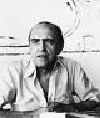

On Dec. 12, 1946 after being convinced by N.Y. planning czar Robert Moses (1888-1981) not to build it in Philadelphia, Penn., a U.N. committee votes to accept a 6-block tract of Manhattan real estate on Turtle Bay overlooking the East River bounded by First Ave., East 42nd St., and East 48th St., offered as a gift by John D. Rockefeller Jr. to be the permanent site of their U.N. HQ; on Dec. 14 the Gen. Assembly okays the deal, and adopts a disarmament resolution prohibiting the A-bomb; the U.N. HQ is designed by Brazilian architect Oscar Ribeiro de Almeida Niemeyer Soares Filho (1907-2012), and completed in 1952.
On Dec. 25-26, 1947 the North Am. Blizzard of 1947 dumps 26.4 in. on Central Park in Manhattan, N.Y., killing 77, the most snow since record keeping began in 1869, becoming the worst U.S blizzard since 1888; beaten on Feb. 12, 2006 (26.9 in.); Britain experiences its most severe winter since 1894?
On Feb. 8, 1950 the first payment is made via a Diners Club credit card in New York City by Frank McNamara at Major's Cabin Grill, becoming the first-ever use of a charge card ("the First Supper").
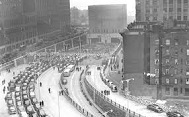
On May 25, 1950 the 2.8mi (9,117 ft.) twin-tube Brooklyn-Battery Tunnel for vehicular traffic under the East River in New York City opens, connecting Manhattan and Brooklyn after passing underneath Governors Island, becoming the longest continuous underwater vehicular tunnel in North Am. (until ?).
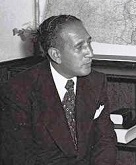
On Nov. 14, 1950 after William O'Dwyer resigns and he becomes acting mayor, then loses the Dem. primary and switches to the populist Experience Party ticket to win, with the slogan "unbought and unbossed", Sicilian-born city council pres. Vincent (Vincenzo) Richard Impellitteri (1900-87) becomes New York City mayor #101 (until Dec. 31, 1953).
 On Jan. 8, 1951 the Secretariat Bldg. of the new windowy U.N. HQ (begun Sept. 14, 1948)
officially opens in Manhattan, New York City for 3.3K employees on 17 acres of land on 1st Ave. between 42nd and 48th Sts. on rundown Turtle Bay overlooking the East River,
donated by John D. Rockefeller Jr. and his son Nelson Rockefeller, allowing the U.N. to move on May 18 from temporary HQ in Lake Success, Long Island to its permanent home;
architects incl. Le Corbusier, Oscar Niemeyer, and Harrison & Abramovitz; it is completed next Oct. 9 at a cost of $65M.
On Jan. 8, 1951 the Secretariat Bldg. of the new windowy U.N. HQ (begun Sept. 14, 1948)
officially opens in Manhattan, New York City for 3.3K employees on 17 acres of land on 1st Ave. between 42nd and 48th Sts. on rundown Turtle Bay overlooking the East River,
donated by John D. Rockefeller Jr. and his son Nelson Rockefeller, allowing the U.N. to move on May 18 from temporary HQ in Lake Success, Long Island to its permanent home;
architects incl. Le Corbusier, Oscar Niemeyer, and Harrison & Abramovitz; it is completed next Oct. 9 at a cost of $65M.



Don't Americans have interesting lives? On Oct. 3, 1951 (3:38 p.m. EST) during the first ML playoff for a pennant since the NL in 1946 and AL in 1948, the Shot Heard 'Round the World AKA "the Little Miracle at Coogans Bluff" (game score 4-2 Brooklyn) sees a 3-run walk-off homer scored on the 2nd pitch by Scottish-born New York Giants outfielder (#23) ("the Flying Scot") ("the Staten Island Scot") Robert Brown "Bobby" Thomson (1923-2010) off Brooklyn Dodgers pitcher (#13) Ralph Theodore Joseph Branca (1926-) in the last half of the 9th inning of the 3rd playoff game at the Polo Grounds, sailing into the lower left field stands and winning the game 5-4 along with the NL pennant 2-1 for the hapless Giants from the mighty Dodgers in a great Am. sports moment; on Aug. 11 Brooklyn was 13-1/2 games ahead of the Giants, but they won their next 16 games and finished the season on a 26-22 clip, winning 37 of the last 44 games incl. the last 7 in a row, then won a 14-inning V over last year's champions the Philadelphia Phillies, tying Brooklyn with a 96-58 season record to force the best-of-3 pennant series; sportscaster Russell Patrick "Russ" Hodges (1910-71) shouts "The Giants have won the pennant!" 3x in a row, and that evening Thomson appears on Perry Como's show on NBC-TV, acting soused; even though there was nobody on first, mgr. Charles Walter "Charlie" "Chuck" Dressen (1894-1966) ordered Branca not to walk Thomson because 20-y.-o. black rookie Willie Mays was in the on-deck circle; Carroll Lockman "Whitey" Lockman (1926-2009) (whose 1-out double scored Alvin Dark, making the score 4-2 and knocking pitcher Don Newcombe out of the game, causing Branca to be called in as a relief pitcher) is on 2nd, and Clinton Clarence "Clint" "Floppy" Hartung (1922-2010) is on 3rd, subbing for Donald Frederick "Don" Mueller (1927-), who broke his ankle sliding into 3rd, missing seeing the big homer; the next day a dozen baseballs are claimed to be the home run ball, after which a mysterious Franciscan nun is found to have kept it in a shoebox for 50+ years, after which her biological sister sends it to a landfill; in Feb. 2001 the Wall Street Journal reports that the Giants began a legal sign-stealing scheme in July 1951, which might have helped Thomson know what pitch was coming; after watching the game on TV, New York City Mafia boss Don Vito Corleone's oldest son Sonny Corleone (b. 1916) is ambushed and killed at the Long Beach Causeway toll plaza on orders of rival mob boss Emilio Barzini - The Godfather, 1972?
In 1952 the first train to run without motormen or conductors goes into service in New York City between Times Square and Grand Central City, but the Transit Workers' Union forces a do-nothing motorman to be present in the car.
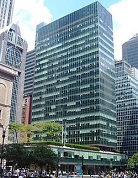
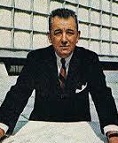
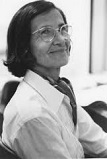
In 1952 the 307-ft. (94m) glass-box skyscraper Lever House at 390 Park Ave. in midtown Manhattan, N.Y., designed by Gordon Bunshaft (1909-90) and Natalie Griffin de Blois (1921-2013) of Skidmore, Owings and Merrill is completed as the new HQ for Lever Brothers Co., designed in the Internat. Style of Ludwig Mies van der Rohe, becoming the 2nd curtain wall skyscraper in New York City after the UN HQ, causing Park Ave. to begin changing from masonry apt. bldgs. to glass towers.

On Jan. 1, 1954 Robert Ferdinand Wagner Jr. (II) (1910-91) (Yale U. Scroll & Key), son of U.S. Sen. (D-N.Y.) (1927-49) Robert Ferdinand Wagner Sr. (1877-1953) (leader of the New Deal Coalition) becomes New York City mayor #102 (until Dec. 31, 1965), serving three terms and going on to create the City U. of N.Y. (CUNY) system and work to bar housing discimination and build public housing, hiring blacks for city govt.; on his 3rd term in 1961 he breaks with Tammany Hall.
On July 29, 1955 Sicilian-born New York City Mafia Don Vito Andolini Corleone (b. 1891) dies of a heart attack in his garden while playing with his grandson Anthony after uttering the last words: "Life is so beautiful", leaving his Mafia empire to his youngest son Michael Corleone (1920-97), who soon has the heads of the Five Families wiped out, along with his brother-in-law Carlo Rizzi, Las Vegas casino mogul Moe Green, and traitor Salvatore Tessio, followed in 1959 by his older brother Fredo - The Godfather Part II, 1974?
It's just like Lucy and Ricky moving from New York to California? On Sept. 23, 1957 Hank Aaron hits an 11th-inning homer to give the Milwaukee Braves their first NL pennant; on Sept. 24 after New York City planning czar Robert Moses (1888-1981) refuses to let owner Walter O'Malley build a new stadium in Brooklyn at the corner of Atlantic Ave. and Flatbush Ave. and tries to force him to build in Flushing Meadows, the Brooklyn Dodgers play their last game at Ebbets Field and head for Los Angeles; on Sept. 29 the New York Giants lose their last game at the Polo Grounds to the Pittsburgh Pirates, then move to San Francisco, Calif., bringing the Dodgers-Giants rivalry to the West coast.
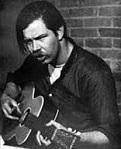
In 1958 the (Village) Gaslight Cafe in Greenwich Village, Manhattan, N.Y. opens, becoming a leading venue for folk music acts; meanwhile folk-blues musician David Kenneth Ritz "Dave" Van Ronk (1936-2002) becomes a celeb in Greenwich Village, N.Y., becoming known as "the Mayor of MacDougal Street", becoming friends with Bob Dylan, Tom Paxton, Phil Ochs, Ramblin' Jack Elliott, and Joni Mitchell; his songs incl. Hang Me, Oh Hang Me, Green Green Rocky Road, and Cocaine; in the late 1960s former Highwaymen member Gilbert Lee "Gil" Robbins (1931-2011), father of actor Tim Robbins becomes owner of the Gaslight Cafe, which closes in 1971.

On June 28, 1959 Soviet deputy PM Frol Romanovich Kozlov (1908-65) (an alcoholic Boris N. Yeltsin clone who is being groomed by Khrushchev as his replacement) opens the Soviet Exhibition of Science, Technology and Culture in New York City.



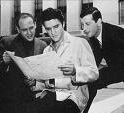


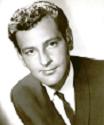
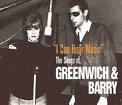
In the early 1960s the Brill Bldg. Era of (mainly Jewish) pop music composers working out of the Brill Bldg. (built 1930) at 1619 Broadway in the former Tin Pan Alley section of Manhattan, N.Y. spawns songwriting teams incl. Burt Bacharach (1928-) and Hal David (1921-2012) ("Walk On By", "Anyone Who Had a Heart"), Carole King (1942-) and Gerry Goffin (1939-) ("Up On the Roof", "Will You Love Me Tomorrow"), Barry Mann (1939-) and Cynthia Weil (1940-) ("On Broadway"), Jerome "Jerry" Leiber (1933-2011) and Michael "Mike" Stoller (1933-) ("West Side Story"), Doc Pomus (1925-91) and Mort Shuman (1936-91) ("Save the Last Dance for Me", "This Magic Moment"), Neil Sedaka (1939-) and Howard Greenfield (1936-86) (Breaking Up Is Hard to Do", "Rainy Jane", "Workin' on a Groovy Thing", "Everybody's Somebody's Fool"), and Jeff Barry (1938-) and Ellie Greenwich (1940-) ("Chapel of Love", "Leader of the Pack"), producing a string of hits that emphasize the writers, producers and arrangers more than the singers, until do-it-all groups like the Beatles change the rules by the middle of the decade; meanwhile Motown Records (AKA Tamla Motown) (founded 1959) is incorporated in Detroit ("Motor Town"), Mich. by former feathwerweight boxer and failed record store owner Berry Gordy Jr. (1929-), going on to crank out R&B and soul records known as "the Motown Sound", injecting a steady stream of color into mainstream U.S. music; the studio is called Hitsville. /p>
On Oct. 18, 1961 Le Bateau, an abstract painting by Henri Matisse is hung upside down in the Museum of Modern Art (MoMA) in New York City, and the mistake goes unnoticed for 47 days, during which time 100K+ people view it.

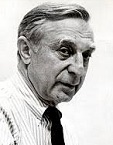
On Sept. 23, 1962 the New York Philharmonic Hall, designed by Chicago, Ill.-born architect Max Abramovitz (1908-2004) is the first bldg. to open at the new Lincoln Center for the Performing Arts in Manhattan, N.Y., whose first pres. is composer William Howard Schuman (1910-92) (until 1969), going on to house the Metropolitan Opera (1966) and the New York City Ballet.
On Feb. 3, 1964 500K blacks and yellows protest de facto racial segregation in public schools in New York City, causing Martin Luther King Jr. to congratulate them for bringing it to nat. attention.

On Apr. 22, 1964 Pres. Johnson opens the 1964-1965 New York World's Fair in Flushing Meadows-Corona Park in Queens, N.Y. (ends Oct. 17, then reopens on Apr. 21-Oct. 17, 1965), while Congress of Racial Equality (CORE) protesters try to drown him out; the theme is "Peace Through Understanding", dedicated to "Man's Achievement on a Shrinking Globe in an Expanding Universe"; being within 10 years of the 1962 Seattle World's Fair, some countries bug out, saving up for Expo 67 in Montreal, and the Bureau of Internat. Expositions refuses to sanction it, further diminishing the power of N.Y. planning czar Robert Moses; it features 140+ pavilions for 80 nations, hosted by 37 nations, plus 24 U.S. states, and 45 corporations, incl. the futuristic 140-ft.-high 120-ft.-diam. 350 ton Unisphere fountain by U.S. Steel, and a house made of formica; the Ma Bell pavilion features a picture phone; the IBM pavilion hosts a multimedia show of how a computer works, and coins the term "word processing"; the It's A Small World (After All) exhibit by Disney is a hit, along with an audio-animatronic Abraham Lincoln in the Ill. Pavilion, both moved later to Disneyland; the strawberry and whipped cream "Bel-Gem" Belgian waffle is a hit; sci-fi writer Isaac Asimov (1920-92) pub. an article on the 2014 World's Fair, with the soundbytes: "Robots will neither be common nor very good in 2014, but they will be in existence", "Communications will become sight-sound and you will see as well as hear the person you telephone. The screen can be used not only to see the people you call but also for studying documents and photographs and reading passages from books"; "In 2014, there is every likelihood that the world population will be 6,500,000,000 and the population of the United States will be 350,000,000"; "A larger portion [of the U.S.] than today will be deprived and although they may be better off, materially, than today, they will be further behind when compared with the advanced portions of the world. They will have moved backward, relatively"; "General Electric at the 2014 World's Fair will be showing 3-D movies of its 'Robot of the Future,' neat and streamlined, its cleaning appliances built in and performing all tasks briskly. (There will be a three-hour wait in line to see the film, for some things never change.)" Watch video.

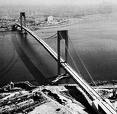
On Nov. 21, 1964 the $325M, 200K-ton (75 cents/lb.), 4,260-ft.-long double-decked Verrazano-Narrows Bridge (begun Aug. 13, 1959), designed by Swiss-born civil engineer Othmar Hermann Ammann (1879-1965), and named after Italian explorer Giovanni da Verrazano (1485-1527) (first Euro to cross the Narrows in 1524) opens, linking Brooklyn on Long Island with Staten Island over the Narrows, becoming the world's longest suspension bridge, 60 ft. longer than the Golden Gate Bridge and 750 ft. longer than the 1931 Geo. Washington Bridge, which Ammann also designed; it marks the gateway to New York Habor as all ships arriving at the Port of New York and New Jersey pass underneath it; in 1976 the Staten Island end becomes the starting point of the New York City Marathon.
On Nov. 9, 1965 (5:16 p.m. EST) (17:16 9-11-65) the Great Northeast Blackout of 1965 occurs during rush hour (begins at 4:44 p.m.) in an 80K sq. mi. area of Ontario, New York and New England (seven NE states and two Canadian provinces) inhabited by 30M as Sir Adam Beck Station No. 2 four mi. W of Niagara Falls on the Canadian side of the border trips a relay, and by 5:38 a domino effect completes the blackout; New York City goes black at 5:27 p.m.; mucho leche flows in the dark as people begin playing hot rabbit?; 62M phone calls are placed in New York City, the most ever recorded in one day; the blackout is traced to the Beck plant on Nov. 15; the blackout lasts up to 13.5 hours.
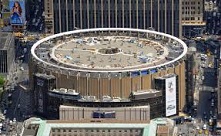
In 1965 after the Grand Pennsylvania Station (opened Sept. 8 1910) in New York City at W. 31st-33rd Sts. and 7th Ave. across the street from Gimbel's Dept. Store was demolished in 1963 to make way for the new (4th) Madison Square Garden (opened on Feb. 11, 1968) (relocated from the 1925 site at 50th St. and 8th Ave.), it is rebuilt as the Penn Station at W. 31st St. and 8th Ave. under New York City''s first Preservation Act, sponsored by atty. Albert Bard (1866-1963).


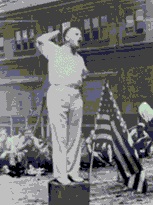
On Jan. 1, 1966 New York City-born liberal Repub. John Vliet Lindsay (1921-2000) becomes New York City mayor #103 (until Dec. 31, 1973), succeeding Dem. mayor (since Jan. 1, 1954) Robert F. Wagner Jr., issuing the following soundbyte in the Jan. 13, 1967 New York Times: "The miniskirt enables young ladies to run faster, and because of it, they may have to"; conservative former CIA agent and Nat Review mag. founder (1955) William Frank (Francis) Buckley Jr. (1925-2008), known for his chipmunk face with arching eyebrows and a darting tongue often compared with an anteater (who denounced the John Birch Society in 1965 as lunatic fringers) ran against him, taking 13.4% of the vote away from his Dem. challenger Abe Beame after uttering the soundbyte that if he won the election he'd demand a recount; on Jan. 2 the Transport Workers Union of Am. (TWU), led by Irish-born (ex-Communist) Michael Joseph "Red Mike" Quill (1905-66) (who calls Lindsey "Linsley") goes on strike, shutting down subway and bus service for 12 days until Lindsay obtains an injunction and gets Quill and seven others cited for contempt of court, at which Quill announces "The judge can drop dead in his black robes", after which he himself dies of a heart attack in jail three days after the strike ends.
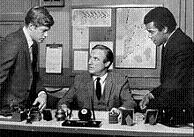
On Sept. 5, 1967 (Tue.) (9:30 p.m.) the half-hour crime drama N.Y.P.D. debuts on ABC-TV for 49 episodes (until Mar. 25, 1969), starring Jack Warden (John Warden Lebzelter Jr.) (1920-2006) as Lt. Mike Haines, African-Am. actor Robert Dean "Bobby" Hooks (1937-) as Det. Jeff Ward, and Frank Converse (1938-) as Det. Johnny Corso; episode 1 is about a man blackmailing gays, becoming the first U.S. TV series with a gay-themed episode.

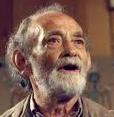

On May 25, 1969 John Schlesinger's X-rated Midnight Cowboy debuts, written by formerly blacklisted screenwriter Morton Salt, er, Waldo Miller Salt (1914-87) based on the 1965 novel by James Leo Herlihy (1927-93), starring Jonathan Vincent "Jon" Voight (1938-) as Tex. dishwasher Joe Buck, who dresses up as a cowboy, heads for New York City on a bus, and tries to hustle his flowing angelic jolly milk machine to lonely rich women, but ends up selling it to deadbeat teenie homos like Bob Balaban in theaters while sliding ever lower into the depths of the Big Apple with seedy crippled derelict Enrico "Ratso" Rizzo, played a little too well by Dustin Hoffman; Brenda Vaccaro plays his best $20 customer Shirley; first X-rated film to receive a best picture Oscar (until ?); #3 grossing film of 1969 ($44.7M).
Early in the 1970s the New York Convention and Visitors Bureau popularizes the term "The Big Apple" in an ad campaign; it comes from New Orleans jazz slang for "the big time".
On Jan. 4, 1970 New York City transit fares jump from 20 cents (since 1966) to 30 cents, then to 35 cents in Jan. 1972, then to 50 cents on Sept. 1, 1975; they started at 15 cents in 1953.

On Sept. 16, 1970 (Wed.) McCloud debuts on NBC-TV for 46 episodes (until Apr. 17, 1977), starring Dennis Weaver (1924-2006) as rustic country deputy marshal Sam McCloud from Taos, N.M., who is assigned to NYPD's 21st precinct, and rides his horse through Manhattan traffic wearing a sheepskin coat and Stetson hat, calling it "the most satisfying role of my career."


Got a strange magic? In Dec. 1970 the North Tower of the 1,368-ft./1,326-ft. 110-story $350M twin-towered World Trade Center (WTC) in Lower Manhattan, New York City, designed by Minoru Yamasaki (1912-86) is completed, followed by the South Tower next July; the excavated dirt is used to make Battery Park City on the W side of Lower Manhattan; it officially opens on Apr. 4, 1973 with a ribbon-cutting ceremony; its originally contains over 9M sq. ft. of office space; the Windows on the World Restaurant is established on the 106th-107th floors of the North Tower in late 1972; the Top of the World Observation Deck is established on the 107th floor of the South Tower; later four more bldgs. are added to the complex, incl. the Marriott World Trade Center, 4 World Trade Center (9 stories), 6 World Trade Center (8 stories) (1975) (housing the U.S. Customs), and 7 World Trade Center (47 stories) (1987); it becomes the world's highest bldg. until 1974; too bad, after becoming a symbol of the Great Satan to Muslim terrorists, it is totally destroyed on Sept. 11, 2001 (9/11) by al-Qaida terrorists in two spectacular implosions triggered by fully-laden Boston-to-LA Boeing 767 airliners rammed into each tower by flight school dropout pilots, changing the U.S. seemingly forever.




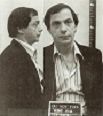
In 1970 New York City reporter Jimmy Breslin (1930-) is beaten up at the Suite restaurant (owned by Lucchese crime family assoc. Henry Hill) by mobster James "Jimmy the Gent" Burke (1931-96) after getting pissed-off at an article he wrote about family member Paul Frank "Paulie" Vario (1914-88). On Dec. 11, 1978 the Lufthansa Heist sees a Lufthansa plane robbed at JFK Airport in New York City of $5M in cash and $875K in jewelry by 6-7 members of the Lucchese family, incl. James "Jimmy the Gent" "the Irishman" Burke (1931-96), who obtained the permission of John Gotti since it's in Gambino territory; on Dec. 18 Parnell Stevens "Stacks" Edwards (b. 1947) is murdered by the mob for forgetting to ditch the van, followed by several more of the heist team, until Lucchese non-goodfella (Irish descent bars him) Henry Hill Jr. (1943-2012) rats them out to the FBI after being arrested for drug dealing in 1980. On May 11, 1980 N.Y. Lucchese crime family mobster Henry Hill Jr. (1943-2012) is arrested for narcotics trafficking, bonds out, and is soon rearrested as a material witness in the Dec. 11, 1978 Lufthansa robbery, deciding to become a rat and join the witness protection program, which leads to 50 convictions, incl. Jimmy Burke and his longtime godfather Paul Vario.



On Apr. 7, 1971 after comedian Don Rickles performs at the Copacabana nightclub in New York City and repeatedly roasts Colombo mob boss Joseph "Joey" "Crazy Joe the Blond" Gallo (1929-72), who is in the audience, then is invited to his 43rd birthday celebration at Umberto's Clam House and declines, four gunmen walk into Umberto's and assassinate Gallo, incl. Frank "the Irishman" Sheeran (1920-2003), bodyguard of Jimmy Hoffa. On June 28, 1971 New York City mob boss Joseph "Joe" Colombo (1914-78) is shot 3x in the head by black gunman Jerome Johnson during an Italian-Am. Unity Day Parade in New York City's Columbus Circle, leaving him in a coma for life, after which Johnson is killed by Colombo's bodyguards; mobster Joseph "Joey" "Crazy Joe" "Joe the Blond" Gallo (1929-72), who has been recruiting blacks into the depleted Mafia is suspected, as is rival Carlo Gambino, and the FBI; 27 more are killed in the aftermath.

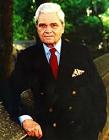

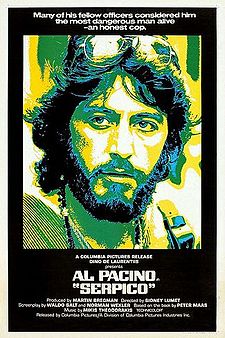
In Oct. 1971 New York City hero cop FrankVIncent Serpico (1936-) breaks the infamous code of silence of the men of blue and testifies at the Knapp Commission hearings about rampant stinking police corruption in the Big Apple after his brothers in blue begin treating him like manure, setting him up on Feb. 3, 1971 to be shot in the face with a .22 handgun by a drug suspect, which he survives with disabilities; on May 14 the police commissioner gives him a medal and promotes him to detective, and he goes on to rat out the prof. criminals in blue, then wisely retires on June 15, 1972, so that biz can go back to usual in copland? In 1972 Peter Maas (1929-2001) pub. Serpico: The Cop Who Defied the System; filmed in 1973. On Dec. 5, 1973 Sidney Lumet's Serpico (Paramount Pictures) debuts, based on the 1973 Peter Maas book, starring Al Pacino as honest New York City cop Frank Serpico, whose comrades turn on him and get him shot point-blank in the face; does $29.8M box office on a $3M budget.

On Mar. 8, 1973 (Thur.) CBS-TV airs the TV movie The Marcus-Nelson Murders, starring Aristotelis "Telly" Savalas (1924-94) as New York City police Lt. Theo Kojak, which gets such good ratings that it spawns the Kojak series (118 episodes from Oct. 24, 1973 to Mar. 18, 1978); based on real detective Thomas J. Cavanaugh Jr. (1924-96), "the Velvet Whip", who is good at getting confessions from tough criminals.

On Nov. 6, 1973 London, England-born Abraham David "Abe" Beame (Birnbaum) (1906-2001) is elected as New York City's first Jewish mayor (#104), taking office next Jan. 1 (until Dec. 31, 1977), spending his term fighting looming bankruptcy, cutting the city workforce, freezing salaries, and reconfiguring the budget, going from a $1.5B deficit to a $200M surplus.

On Aug. 7, 1974 French stuntman Philippe Petit (1949-) performs Le Coup, a blitzkrieg illegal tightrope walk on a 450-lb. cable strung between the twin towers of the World Trade Center, making for a New York City magic moment; he performs for 45 min., making eight passes; cops don't have the heart to arrest him until he's through, but police HQ sends a heli to force him off, causing him to quit in a hurry; after his arrest, he becomes an internat. celeb, and charges are dismissed in exchange for doing a performance for children in Central Park; filmed in 2015 by Robert Zemeckis as The Walk, starring Joseph Gordon-Levitt - look, it's a bird, it's a plane?
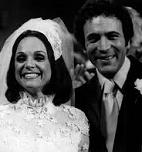
On Sept. 9, 1974 (Mon.) the sitcom Rhoda debuts on CBS-TV for 110 episodes (until Dec. 9, 1978) as a spinoff of "The Mary Tyler Moore Show", starring Valerie Kathryn Harper (1939-) as spunky lovable Jewish babe Rhoda Morgenstern, who moves from Minneapolis, Minn. to New York City and moves in with her sister Brenda, played by Julie Deborah Kavner (1950-), and hooks up with divorced wrecking co. owner Joe Gerard, played by David Lawrence Groh (1939-2008); the debut episode "Joe" becomes the first TV series to achieve a Nielsen #1 rating (until ?), defeating "Monday Night Football"; on Oct. 28 Rhoda and Joe marry in a special 1-hour episode, which becomes the highest-rated TV episode of the 1970s until "Roots" in 1977, and the 2nd most-watched TV episode (52M viewers) since the birth of Litle Ricky on "I Love Lucy" in 1953.

On Oct. 2, 1974 Joseph Sargent's The Taking of Pelham 123 (Palomar Pictures) debuts, based on the 1973 John Godey novel about the hijacking of the Lexington Ave. subway line in New York City stars Walter Matthau as Lt. Zachary Garber, Robert Shaw as Mr. Blue, Martin Balsam as Mr. Green, Hector Elizondo as Mr. Grey, and Earl Hindman as Mr. Brown; "We are going to kill one passenger a minute until New York City pays us 1 million dollars"; the soundtrack album by David Shire (1937-) becomes the first CD release by "Film Score Monthly"; refilmed in 2009.
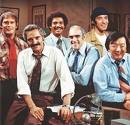
On Jan. 23, 1975 (Thur.) the sitcom Barney Miller debuts on ABC-TV for 168 episodes (until May 20, 1982), starring Hal Linden (1931-) as Capt. Barney Miller of the Greenwich Village 12th Precinct in New York City, Abraham Charles "Abe" Vigoda (1921-) as Det. Sgt. Phil Fish, Max Gail (1943-) as Det. Stanley "Wojo" Wojciehowicz, Ronald E. "Ron" Glass as black Det. Ronald Nathan "Ron" Harris, Jack Soo (1917-79) as Japanese-Am. gambler Det. Nick Yemana (first regular adult Japanese-Am. char. on U.S. prime time TV), and Gregory Sierra (1941-) as Puerto Rican Det. Sgt. Chano Amanguale.
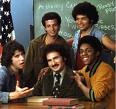
On Sept. 9, 1975 (Tue.) the sitcom Welcome Back, Kotter debuts on ABC-TV for 95 episodes (until May 7, 1979), set in James Buchanan H.S. (really New Utrecht High) in Brooklyn, N.Y. featuring Jewish comedian Gabriel W. "Gabe" Kaplan (1944-) as wise-cracking teacher Gabriel "Gabe" Kotter, who has to watch over the remedial misfit Sweathogs of Room 111, which he founded when he was a student there, and now must try to educate out of his own former mistakes; Sweathogs incl. John Joseph Travolta (1954-) as hunky but cocky leader Vincent "Vinnie" Barbarino (known for the phrase "Up your nose with a rubber hose"), Ronald Gabriel "Ron" Palillo (1949-) as hyena-laughing Arnold Horsach (who claims that his name means "the cattle are dying"), Lawrence Hilton-Jacobs (1953-) as African-Am. char. Freddie "Boom Boom" Washington, and Robert Hegyes (1951-) as Jewish Puerto Rican Juan Luis Pedro Philippo DeHuevos Epstein; John Sylvester White (1919-88) plays vice-principal Mr. (Michael) Woodman; Kotter's wife Julie is played by Marcia Strassman (1948-) (known for her world famous tuna casserole); features the theme Welcome Back by John Sebastian.

On Oct. 11, 1975 (Sat.) (11:30 p.m.) the TV sketch comedy variety show Saturday Night Live (SNL) (NBC Saturday Night), named after an article in The New Yorker titled "Tribal Rites of the New Saturday Night" debuts on NBC-TV in New York City (Studio 8H) with guest host George Carlin, and writer Michael O'Donoghue ("I would like to feed your fingertips to the wolverines"), along with musical guests Billy Preston, and "Society's Child" singer Janis Ian; regular stars incl. Garrett Gonzalez Morris (1937-) (black), Cornelius Crane "Chevy" Chase (1943-), Gilda Susan Radner (1946-89), Jane Therese Curtin (1947-), John Adam Belushi (1949-82), William James "Bill" Murray (1950-), Daniel Edward "Dan" Aykroyd (1952-), and Laraine Newman (1952-).
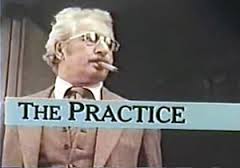
On Jan. 30, 1976 (Fri.) Steve Gordon's comedy series The Practice debuts on NBC-TV for 27 episodes (until Jan. 26, 1977), starring Danny Thomas (Amos Muzyad Yakhoov Kairouz) (1912-91) as West Side, Manhattan, N.Y. physician Jules Bedford, who does it for love, and David Spielberg as his physician son David Bedford, whose office is on Park Avenue, and does it for money.
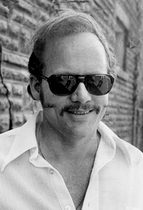

In June 1976 a gang war in Cleveland, Ohio between Irish-Am. gangster (Longshoreman's pres.) Daniel John Patrick "Danny" Greene (1933-77) and the Italian Mafia results in 35 car bombs being set off; too bad, after he attributes escaping several murder attempts to the luck of the Irish, on Oct. 6, 1977 they finally get him leaving from a dental apt. with a you know what; the hitman Ray Ferritto turns rat to save himself from a Mafia contract, leading to the Mafia Commission Trial (U.S. v. Anthony Salerno et al.) of Feb. 25, 1985-Nov. 19, 1986, which indicts 27 Mafia figures from all of New York's Five Families on trial, and ends the Cleveland Mafia, making a star of U.S. atty. Rudolph William Louis "Rudy" Giuliani (1944-); in 1998 former Cleveland police lt. Rick Porrello pub. "To Kill the Irishman: The War That Crippled the Mafia", which is filmed in 2011 starring Ray Stevenson.
On July 4, 1976 (Sun.) year-long celebrations of the Bicentennial of the U.S. Declaration of Independence (DOI) reach their height, with celebrations and fireworks displays, along with the Italian tall ship Amerigo Vespucci sailing into New York Harbor; a record 10,471 U.S. flags fly over the U.S. Capitol in Washington, D.C.
On July 13-14, 1977 the 25-hour 1977 New York City Blackout hits the New York City area after lightning strikes on upstate power lines, causing looters to rampage while the rabbits rustle, causing $150M in theft and property damage; Con Edison is later found guilty of negligence.
On Oct. 5. 1977 Pres. Carter visits Charotte St. in slum-filled South Bronx, N.Y., and next Apr. a $500M urban renewal program is passed.
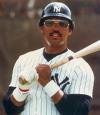
On Oct. 11-18, 1977 the New York Yankees (AL) defeat the Los Angeles Dodgers (NL) 4-2 in the Seventy-Fourth (74th) (1977) World Series; on Oct. 12 Game 2 takes place an hour before abandoned Public School No. 3 a few blocks from the ballpark catches fire, causing Howard Cosell to utter the soundbyte "There it is, ladies and gentlemen, the Bronx is burning" as a heli camera crew shows the scene; the final game sees "Mr. October" Reginald Martinez "Reggie" Jackson (1946-) of the Yankees hit three homers off three different pitchers, each on the first pitch after walking on four pitches on his first trip to the plate and seeing a total of seven pitches in the game; the Yankees champagne-popping locker room celebration with egotist mgr. Billy Martin (his only WS title), equally egotist Reggie Jackson, owner George Steinbrenner, catcher Thurman Munson et al., culminates the Bronx Is Burning Summer in New York City, which has been in flames from the Son of Sam murders, the power blackout, and the New York mayoral contest between incumbent Abraham Beame, Ed Koch, Bella Abzug, and Mario Cuomo.

On Jan. 1, 1978 crypto-sexual (childless) Bronx-born Dem. Jewish atty. Edward Irving "Ed" Koch (1924-2013) becomes New York City mayor #105 (until Dec. 31, 1989), calling himself a "liberal with sanity", becoming known for riding the subway and standing on street corners asking passersby "How'm I doing?', going on to win reelection in 1981 with 75% of the vote after becoming the first New York City to win endosement by both the Dem. Party and Repub. Party, winning a 3rd term with 78% of the vote, launching an ambitious public housing renewal program in his last years before a corruption scandal and racial tensions cause him to lose to David Dinkins.
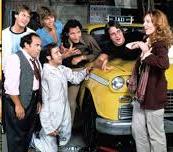
On Sept. 12, 1978 (Tue.) Taxi debuts on ABC-TV for 114 episodes (until June 15, 1983), switching to NBC-TV in June 1982, about the Sunshine Cab Co. in Manhattan, N.Y., starring 5'0" Daniel Michael "Danny" DeVito Jr. (1944-) as abusive boss Louie De Palma, Judd Seymore Hirsch (1935-) as Alex Rieger, Mary Lucy Denise "Marilu" Henner (1952-) as Elaine O'Connor Nardo, Tony Danza (Antonio Salvatore Iadanza) (1952-) as Anthony Mark "Tony" Banta, Christopher Allen Lloyd (1938-) as Rev. Jim "Iggy" Ignatowski, and Andrew Geoffrey "Andy" Kaufman (1949-84) as Latka Gravas, exploring the loser lives of the drivers along with social issues incl. drug addiction, single parenthood and divorce, sexuality, racism, teenie runaways et al.; the Checkers Motors Corp. of Kalamazoo, Mich. supplies the cars, until it closes in 1982; the opening credits show Danza driving in Cab #804 over and over along the Queensboro 59th St. Bridge; the theme song Angela is written and performed by Bob James from his 1978 album "Touchdown".



On Dec. 11, 1978 the Lufthansa Heist sees a Lufthansa plane robbed at JFK Airport in New York City of $5M in cash and $875K in jewelry by 6-7 members of the Lucchese family, incl. James "Jimmy the Gent" "the Irishman" Burke (1931-96), who obtained the permission of John Gotti since it's in Gambino territory; on Dec. 18 Parnell Stevens "Stacks" Edwards (b. 1947) is murdered by the mob for forgetting to ditch the van, followed by several more of the heist team, until Lucchese non-goodfella (Irish descent bars him) Henry Hill Jr. (1943-2012) rats them out to the FBI after being arrested for drug dealing in 1980.
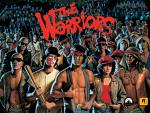
On Feb. 9, 1979 Walter Hill's The Warriors (Paramount Pictures) debuts, based on the 1965 novel by Sol Yurick, a cult film about the street gangs of New York City that is really a remake of Xenophon's "Anabasis" and the 401 B.C. March of the Ten Thousand after their leader Cyrus the Younger was killed in the Battle of Cunaxa, featuring the Warriors gang of Coney Island (known for wearing cool maroon leather vests) on the night of June 21, 1979; stars Michael Beck as warchief Swan, James Remar as Ajax (fingerless gloves), Dorsey Wright as leopard skin do-rag-wearing Cleon (black), Brian Tyler as Snow (black), David Harris as Cochise (black), Tom McKitterick as Cowboy, Thomas G. Waites as Fox (who is thrown underneath a subway train by a cop), Marcelino Sanchez as Rembrandt, Terry Michos as Vermin, Ephraim Benton as Ash (black), and temptingly dirty "don't call me no whore" Deborah Van Valkenburgh as Mercy; Mercedes Ruehl plays a plainclothes cop on a park bench; the Warriors gang is framed for killing gang messiah Cyrus (Roger Hill) of the Gramercy Riffs in Van Cortlandt Park in the Bronx by rival Rogues gang leader Luther (David Patrick Kelly), and forced to fight their way back home through 27 mi. of cops and color-wearing gangs, incl. the bat-swinging Baseball Furies, Hi-Hats, Turnbull AC's, Hurricanes, Saracens, Jones Street Boys, Orphans, Electric Eliminators, Rogues, Destroyers, Panzers, Satan's Mothers, and gun-toting lezzie Lizzies; Lynne Thigpen plays the DJ; Cyrus makes a good point about how the 60K total gang members could rule Gotham if they could work together against the paltry 20K cops; does $22.5M box office on a $4M budget; "Warriors, come out to play"; "Maybe you're all just goin' faggot"; "I'm going to shove that bat up your ass and turn you into a popsicle"; does $22.5M box office on a $4M budget; the Warriors Theme (Night Run) is by Philip Marshall; the Furies Chase Theme is by Barry de Vorzon.

On Mar. 14, 1980 former liberal Dem. U.S. rep. (1969-71) Allard Kenneth Lowenstein (b. 1929) is mortally wounded in his New York City law office by a supporter, civil rights activist, and carpenter Dennis Sweeney (1943-), who is declared criminally insane next Feb., and released in 2000.
On Apr. 1-11, 1980 the 1980 New York City Transit Strike (first since 1966) over wages for contracted workers sees 34K mass transit workers in New York City go on strike, stopping 6.4K subway cars and 4.5K buses, forcing 5.4M to find other ways to get to work until a 17% raise is agreed to (9% in the first year, 8% in the 2nd year); women begin wearing sneakers to work to walk over the Brooklyn Bridge, and it becomes a habit.
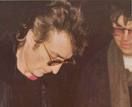

That really chaps my hide, or, the Day the Music Died, or, Imagine there's no John Lennon? On Dec. 8, 1980 (Mon.) (12-8-80) (10:49 p.m.) after a nude photoshoot and a recording session for Yoko Ono's "Walking on Thin Ice", former Beatle John Winston Ono Lennon (b. 1940) is shot 4x in the back, side, and shoulder with a Charter Arms .38 Special Undercover snub-nosed revolver firing five hollow point "dum-dum" bullets, and killed outside the Dakota Apt. Bldg. in New York City's Upper West Side on W 72nd St. (6 blocks from 66th St.) (a reputed home for witches, famous as the setting for "Rosemary's Baby") by deranged eyeglasses-wearing Tex.-born "Catcher in the Rye" loving fan and Honolulu security guard Mark David Chapman (1955-), who had gotten his autograph earlier in the day, and stays on the scene reading his novel, then calls out "Mr. Lennon" and drops to a combat stance before firing, and later tells police "I'm sure the large part of me is Holden Caulfield, who is the main person in the book - the small part of me must be the Devil"; Lennon is hit in the aorta and collapses to the floor, dropping cassettes of "Walking on Thin Ice", then struggling to the lobby shouting "I'm shot! I'm shot!", and arrives DOA at the hospital, and is pronounced dead at 11:07 p.m.; Chapman remains on the scene, letting his smoking gun drop on top of Lennon's bloodstained eyeglasses, and not resisting arrest, telling them "I acted alone" and "Lennon had to die"; future rock star Madonna (1958-), who had just moved to the Big Apple is walking a few blocks away at the time, and joins the crowd outside the Dakota; singer Neil Diamond is also in town for the debut of his movie "The Jazz Singer"; Howard Cosell announces Lennon's death on Monday Night Football during a game between the Miami Dolphins and New England Patriots, with the soundbyte "This, we have to say it, remember this is just a football game, no matter who wins or loses. An unspeakable tragedy, confirmed to us by ABC News in New York City. John Lennon, outside of his apartment building on the West Side of New York City, the most famous, perhaps, of all the Beatles, shot twice in the back, rushed to the Roosevelt Hospital, dead on arrival"; after the usual calls for more gun control laws, Pres. Reagan says they wouldn't have prevented the shooting; on Dec. 14 fans around the world pay tribute to the brainy Beatle in a John Lennon Memorial Service in Central Park across the street from the Dakota, where the Strawberry Fields Memorial (designed by Yoko Ono) is erected, complete with the word "Imagine" (dedicated on Oct. 9, 1985); Fidel Castro commemorates a statue to this "revolutionary hero"; before he dies, John arranges a dog for his 5-y.-o. son Sean Ono Lennon (1975-), which arrives on Dec. 25 and is named "Merry Christmas"; 1 mo. after the murder, Yoko Ono releases Walking on Thin Ice (for John) her first charting single, peaking at #58; Lennon is awarded a posth. album of the year at the 1982 Grammy Awards; Chapman toys with an insanity defense then pleads guilty, and on Aug. 24, 1981 is sentenced to 20-life, ending up in Attica Correctional Facility in Buffalo, N.Y.; the hit was really ordered by the CIA?
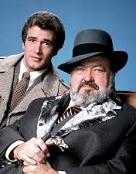
On Jan. 16, 1981 (Fri.) the TV series Nero Wolfe debuts on NBC-TV for 14 episodes (until Aug. 25), based on the Rex Stout stories, starring William Conrad (John William Cann Jr.) (1920-94) as refined self-indulgent Manhattan, N.Y. detective Nero Wolfe, and Lee Arthur Horsley (1955-) as his asst. Archie Goodwin.
On Sept. 19, 1981 Simon and Garfunkel reunite for a free Concert in Central Park on the Great Lawn, attended by 500K, releasing a live album next Feb. 16.


On Dec. 16, 1985 6'2" 270 lb. Gambino crime family don (since 1976) Constantino Paul "Big Paul" "Pope" "Chicken Man" Castellano (b. 1915), "the Howard Hughes of the Mob" is murdered in front of Sparks Steak House on E. 46th St. in Manhattan along with his driver Thomas Bilotti while on trial with nine others for auto theft conspiracy under orders of underboss John Joseph Gotti Jr. (1940-2002), who seizes power, becoming known as "the Dapper Don"; the hit man was Salvatore "Sammy the Bull" Gravano?
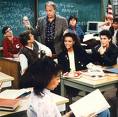
On Sept. 17, 1986 Head of the Class debuts on ABC-TV for 114 episodes (until June 25, 1991), about gifted students at Monroe (Millard Filmore) H.S. in Manhattan, starring Howard Hesseman (1940-) as ex-60s radical history teacher Charlie Moore, who gets to teach students Daniel James "Dan" Schneider (1966-) as fat geeky computer nerd Dennis Blunden, Dan Frischman (1959-) as skinny geeky computer nerd Arvid Engen, Tony O'Dell (Anthony Dell'Aquila) (1960-) as narcisisstic conservative Reagan-loving white preppy Alan Pinkard, Robin Simone Givens (1964-) as spoiled black rich girl Darlene Merriman, Kimberly Russell (1964-) as Sarah Nevins, Khrystyne Kamil Haje (1968-) as sensitive redhead Simone Foster, Johar "Jory" Husain (Joher Coleman) (1968-) as Indian exchange student Jawaharlal Choudhury, and Tannis Vallely (1975-) as 10-y.-o. precocious Janice Lazarotto; William G. Schilling (1939-) plays principal Dr. Harold Samuels; too bad, the show attempts to sell braininess to the unbrainy U.S. public with a mixed PC message, and the so-called genius students are not much above avg. Euro students?

On Mar. 25, 1988 New York City's sensational Preppy Murder Case sees Robert Emmet Chambers Jr. (1966-) plead guilty to first-degree manslaughter in the Aug. 26, 1986 death of 18-y.-o. cyclist Jennifer Levin in New York's Central Park; he receives a sentence of 5-15 years in priz dodging flying jizz after his story that she raped him and he had to kill her to stop is scraped off the courtroom wall.

On Apr. 19, 1989 (9:00 p.m. local time) a group of up to 50 black and Hispanic Harlem teenagers go "wilding" in Central Park, New York City looking for random whites to terrorize and rape, and chase down, rape, and beat Trisha Ellen Meili (1962-), a 28-y.-o. Wall Street investment banker, who becomes known as the Central Park Jogger; six teenagers are charged and five (four black, one Hispanic) are convicted, receiving 5-15-year sentences, until convicted serial murderer-rapist Matias Reyes confesses in 2002 that he did it alone, but is not prosecuted because of the statute of limitations, causing all five convictions to be vacated, and in 2003 they sue the city, which stalls until mayor Bill de Blasio authorizes a $41M settlement in 2014 - so let them off and I'll do their time?
On June 20, 1988 the U.S. Supreme Court unanimously upholds a New York City law making it illegal for private clubs to generally exclude women and minorities.

On Aug. 23, 1989 in a case that inflames racial tensions in New York City, black teenager Yusuf (Yusef) Hawkins (b. 1973) is shot dead after he and three friends are confronted and chased by 10-30 white youths in the heavily Italian working-class Brooklyn neighborhood of Bensonhurst; Rev. Al Sharpton leads a protest march through the neighborhood; two men are tried for the murder, and Joseph Fama is convicted of 2nd degree murder, while Keith Mondello is acquitted of murder but convicted on 12 lesser charges, causing more protest marches by Sharpton, contributing to the downfall of New York City mayor (since Jan. 1, 1978) Ed Koch.



On Nov. 7, 1989 lt. gov. Lawrence Douglas "Doug" Wilder (1931-) becomes the first elected black state gov. in U.S. history, taking office next Jan. 14 as Va. gov. #66 (until Jan. 15, 1994); David Norman Dinkins (1927-) is elected the first black mayor (#106) of New York City, taking office on Jan. 1 (until Dec. 31, 1993); white supremacist former KKK leader David Ernest Duke (1950-) scores one for the pinks when he is elected to the State House of Reps. (Repub.) in La. (until 1992), and disavows his white supremacist agenda (but later returns to it) - I don't hate other races I just luuuuv mine?

On Jan. 1, 1990 David Norman Dinkins (1927-) is sworn-in as New York City's first black mayor (#106) (until Dec. 31, 1993).
The Big Two for One Plus Ninety-Two, or, WTC One? On Feb. 26, 1993 Muslim terrorists attempt to blow up the twin-tower World Trade Center in New York City with a nitric acid-urea bomb in a Ryder van in the parking garage, killing six, injuring 1,042, and costing $591M in damage and lost business; a 3-story-deep hole is ripped in the structure, collapsing the ceiling of a nearby subway line; an officer worker uses his new Timex Indiglo night lite to guide fellow employees down 40 flights of dark stairs, causing a sales boom; the bombing is later linked to al-Qaida (Al-Qaeda) and Osama bin Laden; on Mar. 4 Palestinian illegal immigrant Mohammed A. Salameh (1967-) is arrested in Jersey City, N.J., and by Aug. seven suspects have been arrested; the trial of four of them begins on Oct. 4; on July 26, 2005 a jury rules that the New York Port Authority is negligent for not properly maintaining the parking garage, which is a "substantial factor" in allowing the bombing to occur.

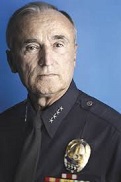
On Jan. 1, 1994 New York City-born former 1980s Mafia-busting U.S. atty. Rudolph William Louis "Rudy" Giuliani (1944-) becomes Repub. mayor #107 of New York City (until Dec. 31, 2001), going on to hire William Joseph "Bill" Bratton (1947-) as police commissioner (until Apr. 15, 1996), who applies the "broken windows theory" that clamps down on minor violations to prevent a permissive atmosphere leading to serious crimes.




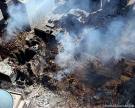























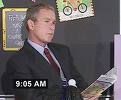
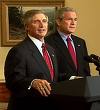











On Sept. 11, 2001 (Tues.) Pres. George W. Bush is targeted in an assassination plot by al-Qaida in Sarasota, Fla.? On Sept. 11 (Tues.) the New York Times pub. a story about ex-Weatherman radical Bill Ayers, quoting him as saying "I don't regret setting bombs. I feel we didn't do enough." On Sept. 11 (Tues.) the 9/11 Attacks see the New York City skyline changed after 19 lowdown cowardly stinking crazed Satan-controlled Muslim raghead jihad terrorist scumbags (incl. 15 Saudis) hijack four U.S. commercial airliners and take over the unprotected cabins, using flying lessons given them in the U.S. to steer and crash into the twin towers of the World Trade Center (WTC) (dedicated in Apr. 1973), and also the Pentagon; Am. Airlines Flight 11 (Boeing 767) from Boston to Los Angeles hits the North Tower at 8:46:26 a.m. with a direct hit that disables all the elevators; actor Tony Perkins' wife Berinthia "Berry" Berenson-Perkins (b. 1948) is on Flight 11; United Airlines Flight 175 (Boeing 767) from Boston to Los Angeles hits the South Tower at 9:02:54 a.m. at an angle, permitting people to escape; Am. Airlines Flight 77 from Washington, D.C. to Los Angeles hits the SW face of the Pentagon at 9:43 a.m. on the 60th anniv. of its groundbreaking; it was really a U.S.-launched missile, and was covered-up?; Pres. Bush had a meeting scheduled with affiliates of the Muslim Brotherhood after he arrived back at the White House; Pres. Bush first informs the nation of "an apparent terrorist attack on our country" at 9:30 from the school; at 9:45 a.m. the FAA grounds all civilian domestic and internat. flights to-from the U.S., although an El Al (Boeing 747) flight is allowed to take from JFK Airport to Tel Aviv at 4:11 p.m.; commercial flights resume on Sept. 13, followed by private flights on Sept. 14; on Sept. 20 a flight containing Bin Laden family members is allowed to leave the U.S., carrying four Americans; on Sept. 11 NBC-TV commentator Tom Brokaw answers a speculation by Matt Laurer with "This is war. This is a declaration and execution of an attack on the United States", later chanting "War! War!"; "When I saw the second airplane hit, I knew jihad has come to America" (Nonie Darwish); the South Tower implodes at 9:59:04 a.m., followed by the North Tower at 10:28:31 a.m., after the jet fuel ignites tons of paper, which causes internal temps as high as 2K F; Pres. Bush is informed of the South Tower crash at 9:07 a.m. by White House chief of staff (2001-6) Andrew Hill "Andy" Card Jr. (1947-) while visiting with 2nd grade (mainly black) students at Emma E. Booker Elementary School in Sarasota, Fla., and turns red, but stays with the kids, reading aloud from the children's story The Pet Goat (by Siegfried Engelmann and Elaine C. Bruner) with them; British-born former U.S. Army officer Cyril Richard "Rick" Rescoria (b. 1939), vice-pres. of security at Morgan Stanley (scheduled for retirement at year's end) dies after helping 2.7K coworkers to safety; after rushing in to help not knowing about the impending collapse; 343 firefighters die in the Twin Towers, and firefighter (Argentine native) Sergio Gabrial Villanueva (b. 1968) becomes a hero; Hollywood actor Steven Vincent "Steve" Buscemi (1957-) (a former NYC firefighter) quietly returns to Engine Co. 55 and works 12-hour shifts, trying to avoid publicity; two Port Authority of N.Y. and N.J. police officers survive the towers' collapse and are rescued from the rubble after 22 hours; 300K are evacuated by boat in lower Manhattan after hundreds of craft answer a Coast Guard call for help "From All Available Boats" and converge on the West Side; meanwhile United Air Lines Flight 93 from Newark, N.J. to San Francisco, Calif. carrying 37 passengers and seven crew is hijacked by Beirut, Lebanon-born pilot (al-Qaida member) Ziad Samir Jarrah (1975-2001) and three Saudi Arabia-born muscle men Ahmed bin Abdullah al-Nami (1977-2001), Ahmed Ibrahim al-Haznawi (1980-2001), and Saeed Abdallah Ali Sulayman al-Ghamdi (1979-2001), crashing at 10:03 a.m. near Shanksville in Somerset County, Penn. (60 mi. SE of Pittsburgh and 150 mi. NW of Washington, D.C.) after the 33 all-American passengers are first cowed by a fake body bomb then fight back against the four ragheads instead of cowering like sheep, and kick the surprised terrorists butts, although too late to prevent the crash; Flight 93 passenger Todd Morgan Beamer (b. 1968) becomes a U.S. hero when he quarterbacks the makeshift anti-raghead team with the all-American words "Let's roll!", which are heard on his cellphone; his sad-proud wife Lisa later founds the charity Heroic Choices; the Flight 93 Nat. Memorial is established on Sept. 24, 2002, and dedicated on Sept. 10, 2011; 2,976 are killed in the 9/11 attacks, incl. 2,605 in New York City, 125 at the Pentagon (incl. 55 military personnel), and 246 on the four planes, with 24 listed as missing, becoming the most Americans lost on U.S. soil since the Sept. 17, 1862 Battle of Antietam, and the greatest single-day civilian loss of life in the U.S. since the May 31, 1889 Johnstown Penn. Flood; Time mag. pub. a 9/11 tragedy issue with a cover photo by Lyle Owerko; many Palestinians openly celebrate the attackon the Great Satan U.S.; Iraqi pres. Saddam Hussein utters the soundbyte: "The American cowboys are reaping the fruit of their crimes against humanity"; the govts. of Cuba, Iran, Libya, and North Korea join a worldwide chorus denouncing the attacks; Arab leaders denouncing the attacks incl. King Hussein of Jordan, Egyptian pres. Hosni Mubarak, and Lebanese PM Rafik Hariri; some Muslims around the world express sympathy for the 9/11 victims, incl. a moment of silence at a World Cup match between Bahrain and Iran on Sept. 14, and a candlelight vigil by Palestinians in Jerusalem on Sept. 15 along with another in Tehran; on Sept. 14 Ireland holds a nat. day of mourning, becoming the only country other than the U.S. and Israel to do so; the Taliban in Afghanistan condemns the attacks but denies that Osama bin Laden is behind them; bin Laden also denies involvement, claiming that there is a govt. within the govt. of the U.S. that wants to turn the 21st cent. into a cent. of conflict between Islam and Christianity, suggesting U.S. Jews and intel agencies; the economic repercussions cost the U.S. economy $1T (same as Bush's June 7 tax cut); 40K workers work at "The Pile" at Ground Zero for the next 8 mo., removing 1M tons of rubble, and 69% of them later develop permanent lung problems known as "WTC Cough"; NASA astronaut Frank Culbertson films the smoking WTC from space; New York Fire Dept. chaplain (Roman Catholic Franciscan friar) Father Mychal (Michael) Fallon Judge (b. 1933) dies at the WTC, becoming the "Saint of 9/11" ("God is going to make the headlines some day rather than the Devil, so don't give up"); St. Nicholas Greek Orthodox Church at 130 Liberty St. is destroyed, and the govt. stalls in rebuilding it until ?; St. Paul's Chapel at 209 Broadway facing Church St. opposite the E side of the WTC, where new U.S. pres. #1 George Washington prayed after his first inauguration on Apr. 30, 1789 is not harmed, and the syacmore tree in its courtyard becomes known as the 9/11 Sycamore, with a memorial later built for it (Isaiah 9:10); at 8:30 p.m. Pres. Bush gives a great Red-Blooded Am. Cowboy Speech from the White House, with the soundbyte "Make no mistake about it, the U.S. will hunt down and punish those responsible for these cowardly acts"; the U.S. launches into a new kind of war, the Global War on Terror (Terrorism) (ends ?); Osama bin Laden and his Al-Qaida org. are immediately suspected and become the world's most-wanted criminals, despite of a lack of hard evidence; Egyptian-born 9/11 ringleader ("Emir of the WTC Attack") Mohamed Mohamed Atta (b. 1968) (Mohamed Attacker?) (who created the jihad cell in Hamburg, Germany in the late 1990s, incl. three of the four pilots) is found to have met in Prague with an Iraqi spy, throwing suspicions on Saddam Hussein, and New York City-born U.S. nat. security adviser Richard N. Perle (1941-) allegedly either blames the 9/11 attack on Iraq or wants retaliation to incl. them; Pres. Bush activates the "shadow govt." of 75-150 top officials working 90-day shifts in underground bunkers on the East Coast; the Five Dancing Israelis incident starts with a woman named Maria claiming to see a white van with five men in it filming the burning Twin Towers, allegedly with shouts of joy, who are alleged to be Israeli Mossad agents, although they are interviewed and deny dancing etc., causing conspiracy theorists to claim 9/11 was a Mossad operation; New York City Mayor Rudolph William Louis "Rudy" Giuliani (1944-) leads the city in a heroic manner after the attacks, earning the title "America's Mayor", and calling the deaths "worse than anyone could bear"; "Vanity Fair" ed. Graydon Carter comments "I think it's the end of the age of irony"; British Queen Elizabeth II comments "Grief is the price we pay for love"; Russian pres. Vladimir Putin orders a massive expansion of intel-gathering efforts in North Am. and W Europe; a folded $20 U.S. bill shows the Twin Towers burning?; Algerian-born British airline pilot Lotfi Raissi becomes the first person accused of participating in the 9/11 attack, and is held for five mo. in Belmarsh hi-security prison in London, then put through nine years of hell until being cleared on Apr. 23, 2010; the 20-ft. Ground Zero Cross, a fortuitous configuration of fallen I-beams draws memorial messages and becomes a religious monument; Alicia Esteve Head, who is in Spain on 9/11 arrives in the U.S. in 2003 and pretends to be 9/11 Twin Towers survivor Tania Head, becoming er, head of the survivors' network until she is exposed in 2007, becoming the subject of the 2012 book The Woman Who Wasn't There: The True Story of an Incredible Deception by Robin Gaby Fisher; ; meanwhile by 2003 a joke translation of Quran 9:11 begins circulating: "For it is written that a son of Arabia would awaken a fearsome Eagle. The wrath of the Eagle would be felt throughout the lands of Allah and lo, while some of the people trembled in despair still more rejoiced, for the wrath of the Eagle cleansed the lands of Allah; and there was peace"; later conspiracy theorists begin exposing the 9/11 attacks as really perpetrated by the U.S. govt. to give them a pretext to destroy the last bastions of the Bill of Rights in the name of homeland security and give them a coverstory to invade the Middle East at will to secure oil, and point to a giant 9/11 conspiracy and coverup, incl. the framing of Muslim terrorists, who allegedly could never have accurately flown the airliners into the WTC, the fact that no fighters were scrambled to accept any of them, the fact that Osama bin Laden et al. were originally trained by the U.S., the problem that eight of those named on the FBI's list of 19 names later turn up alive and well living in different countries, and the evidences of the deliberate demolition of WTC Bldg. 7, which hadn't been struck by an airplane; later civil engineers prove WTC Bldg. 7 was in free-fall for 2.5 sec., pointing to planted explosives; others claim to rebut conspiracy allegations; did the U.S. govt murder its own people to make a power grab, then stage a coverup, stay tuned?; in Aug. 2009 a group of law enforcement officers and others who participated in the 9/11 rescue and cleanup develop immune system cancer and other health problems; by 2010 3K WTC survivors are still experienced long-term PTSD; on Mar. 11, 2010 they reach a $657.5M settlement; Saudi princess Haifa bint Faisal, wife of U.S. ambassador to Saudi Arabia Prince Bandar bin Sultan is later discovered to have donated money via a conduit to two of the 9/11 hijackers.

On Jan. 1, 2002 Boston, Mass.-born billionaire Jewish Dem.-turned-Repub. financier Michael Rubens "Mike" Bloomberg (1942-) becomes mayor #108 of New York City (until Dec. 31, 2013), succeeding 9/11 hero mayor Rudy Giuliani.
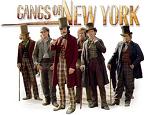

On Dec. 20, 2002 Martin Scorsese's Gangs of New York (Miramax) debuts based on the 1927 book by Herbert Asbury, starring Leonardo DiCaprio as Amsterdam Vallon, son of Priest Vallon (Liam Neeson), Daniel Day-Lewis as William "Bill the Butcher" Cutting, Jim Broadbent as Boss Tweed, John C. Reilly as Happy Jack Mulraney, and Cameron Diaz as pickpocket Jenny Everdeane in an attempted recreation of hellhole Five Points, Manhattan, New York City in 1862-3 incl. the Dead Rabbits and their bitter nativist gang enemies (the Bowery Boys?); does $193.8M box office on a $100M budget; watch trailer.
In 2002 the first >No Pants Day is held in New York City, where particpants take off their pants in a subway car and try to act normal.
On Dec. 20-22, 2005 3K mass transit workers in New York City strike, bringing the city to its knees and causing thousands to don sneakers and walking shoes and walk to work over the Brooklyn Bridge, like in the Apr. 1, 1980 strike.
On Apr. 18, 2006 two Roosevelt Island Tramway cable cars stall for several hours while hanging over the East River in New York City, stranding 70 in a scene reminiscent of Hollywood terrorist flicks.
On May 19, 2006 Tommy Hilfiger gets in a fight with Axl Rose at the Plumm Nightclub in New York City.
On June 1, 2006 the U.S. Homeland Security Dept. cuts anti-terrorism funding to New York City by 40% ($83M) after determining that it has no nat. monuments or icons, such as the Empire State Bldg., Statue of Liberty, NYSE, Rockefeller Center, Holland and Lincoln tunnels, U.N. Bldg., or Brooklyn Bridge; outraged New Yorkers call for the firing of chief Michael Jack, er, Chertoff - how did they vote in the last pres. election?
On Oct. 10, 2006 after being escorted out of her lavish mansion on New York's Upper East Side by her hubby Ron Perelman's security guards, Am. actress Ellen Barkin auctions 100+ pieces of jewelry from her marriage, fetching $20.3M at Christie's, saying "I'm not proud of that marriage."

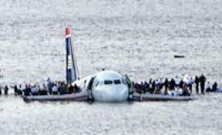
On Jan. 15, 2009 the "Miracle on the Hudson" sees U.S. Airways Flight 1549 (Airbus 320) en route from LaGuardia Airport in New York City to Charlotte, N.C. run into a flock of geese, damaging an engine, after which capt. Chesley Burnett "Sully" Sullenberger III (1951-) successfully lands it in the Hudson River, saving all 155 aboard, causing him to become a new post-9/11 New York hero and giving desperate Americans hope of a lucky year to come; he later testifies to Congress how older pilots are treated like merde by the airlines, incl. how his pension was eliminated.
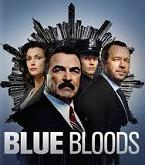
On Sept. 24, 2010 (Fri.) the police procedural drama Blue Bloods debuts on CBS-TV for ? episodes (until ?), about the Irish-Am. Reagan family of NYPD police officers, led by former USMC officer and Vietnam vet Francis X. "Frank" Reagan, played by Thomas William "Tom" Selleck (1945-).
On Oct. 26, 2010 (1:33 a.m.) Hollyweird actor Charlie Sheen goes on a naked cocaine-fuled frenzy in a New York City Plaza hotel, causing his date, porno actress Christina Walsh (AKA Capri Anderson AKA Alexis Capri) (1988-) to lock herself in the bathroom; meanwhile Sheen's ex-wife Denise Richards and their two young daughters sleep across the hall; Sheen is hospitalized, is not charged, and pays the hotel $7K for damages.
On Apr. 10, 2011 1K Muslims and leftist anti-war activists protest in Union Square in New York City, carrying signs that read "Stop War/Terrorism/Islamophobia".
On May 1, 2011 New York city mayor Michael Bloomberg appears on NBC-TV's "Meet the Press", and suggests that "you pass a law letting immigrants come in as long as they agreed to go to Detroit and live there for five or ten years, start businesses, take jobs, whatever."

On Aug. 21, 2013 after news breaks that the NYPD has designed mosques as terrorist orgs. for purposes of surveillance, New York City mayoral candidate Bill de Blasio tweets the soundbyte that he is "deeply troubled NYPD has labelled entire mosques & Muslim orgs terror groups with seemingly no leads. Security AND liberty make us strong." Bill de Blasio (Warren Wilhelm Jr.) (1961-) is elected mayor of New York City, and is sworn-in as mayor #109 on Jan. 1 (until ?), becoming the first Dem. since 1989, succeeding Michael Bloomberg, going on to end the stop-and-frisk policy of the NYPD, institute deescalation training, and require them to wear body cameras, turning the NYPD Union against him. On Feb. 4 New York City mayor Bill de Blasio announces special treatment for Muslims, closing schools for Eid al-Fitr and Eid al-Adha, along with the Lunar New Year, but not the Hindu festival Diwali. On Dec. 19 NYPD cops Wenjian Liu and Rafael Ramos are assassinated (shot in the head in their cop car) by Arabic-speaking Quran-quoting Am. Muslim Ismaaiyl Brimsley, who commits suicide to avoid capture; he did it for jihad, or in revenge for Eric Garner and Michael Brown?; on Dec. 27 hundreds of cops turn their backs on NYC mayor Bill de Blasio at Ramos' funeral, where vice-pres. Joe Biden gives a speech with the soundbyte that the "assassin's bullet" touched the "soul of an entire nation".
In 2018 a mass exodus begins from the San Francisco Bay area in Calif. due to high housing costs combined with high crime and illegal immigrants; another mass exodus is happening in New York City, which is losing 100 residents/day, and the middle class has shrunk from 61% in the early 1970s to 48%.
On Feb. 17, 2018 Am. Muslim Munther Omar Saleh (1995-) is sentenced to 18 years in federal prison after admitting to plotting a jihad massacre in New York City for ISIS.
On May 15, 2018 the Wealth-X Billionaire Census is pub., revealing that billionaire wealth surged 24% to a record level in 2017, and the billionaire pop. surged 15% fo 2,754 (vs. 2,473 in 2015); San Francisco, Calif. leads the other cities, with one billionaire for every 11,612 inhabitants, vs. 81,311 for New York City, 84,007 for Dubai, 84,962 for Hong Kong, 101,957 for Los Angeles, Calif., and 135,198 for London.
In 2018 homelessness in New York City reaches an all-time record of 133,284 unique individuals spending at least one night in a city shelter, becoming a 61% increase since fiscal year 2002.
On June 10, 2019 the N.Y. state legislature outlaws cat declawing, ignoring their decision in Jan. to legalize late-term abortions.